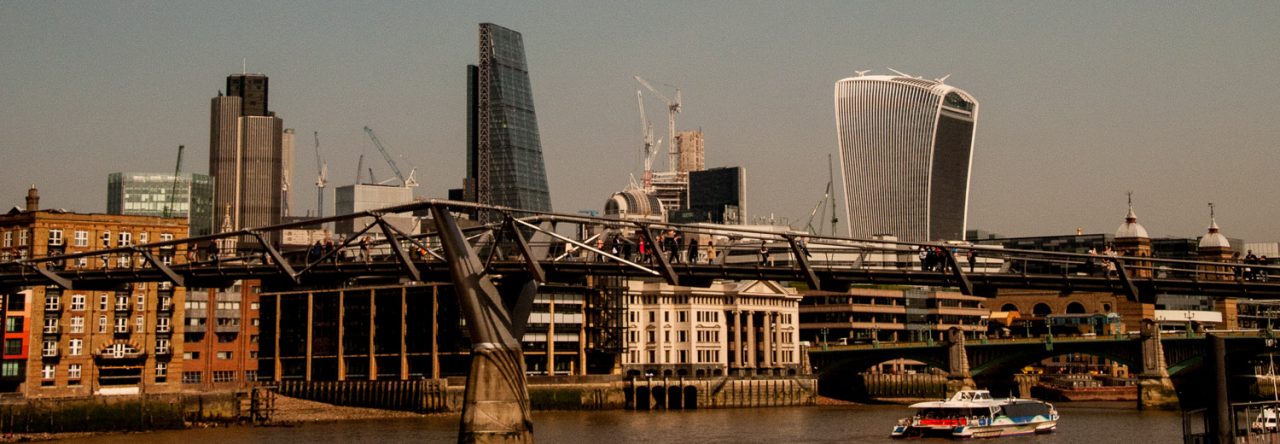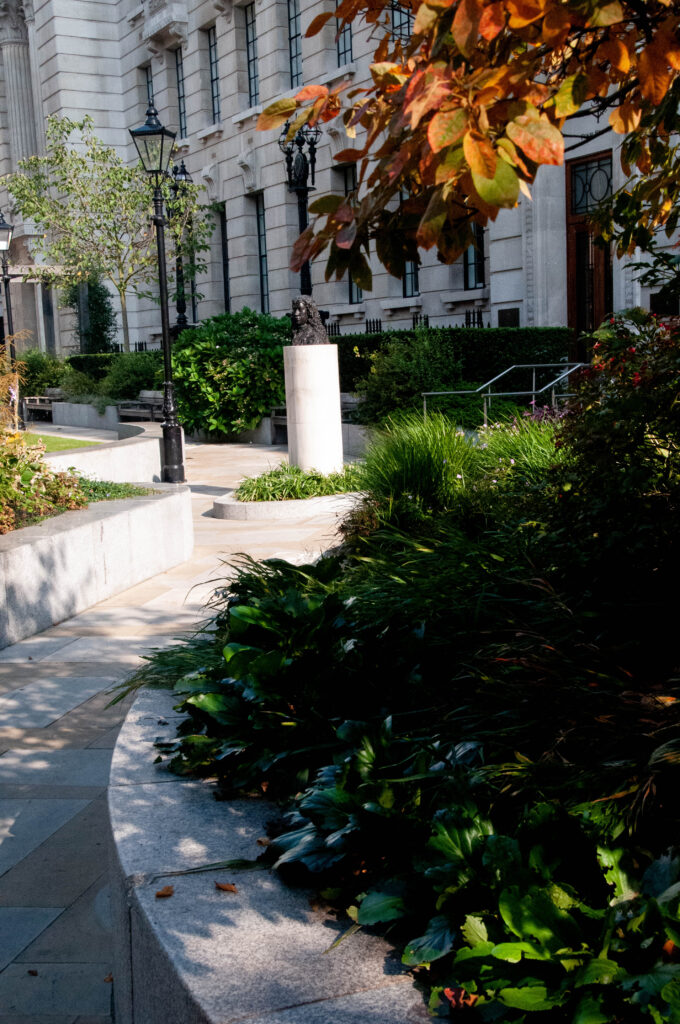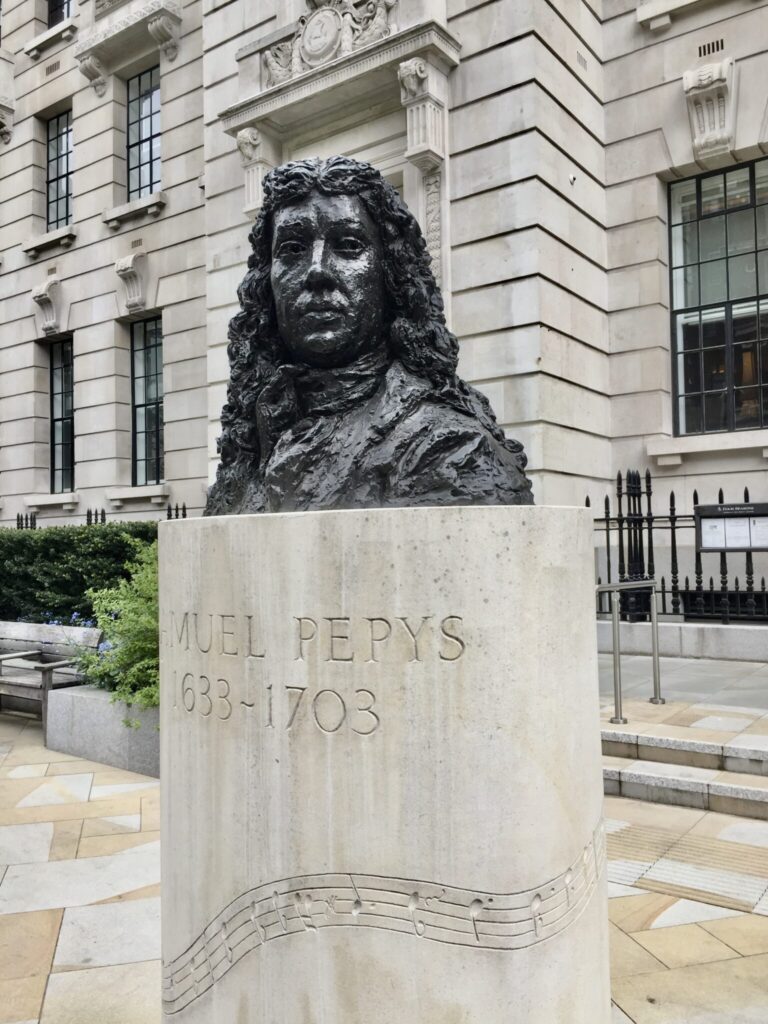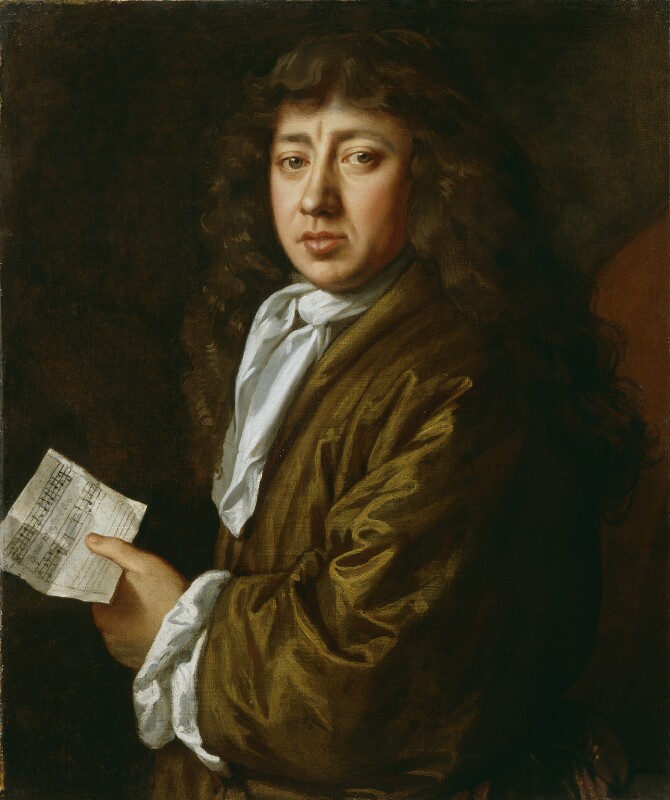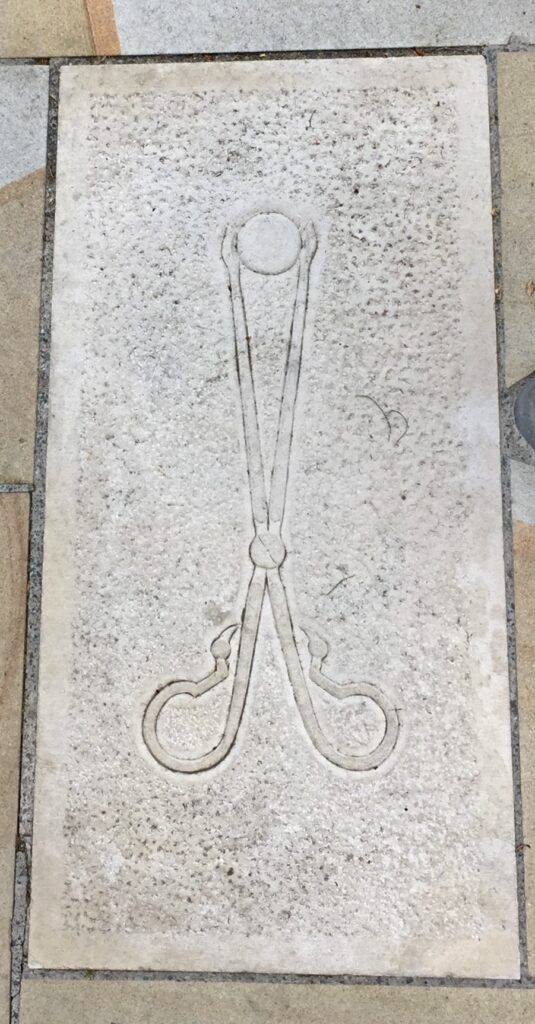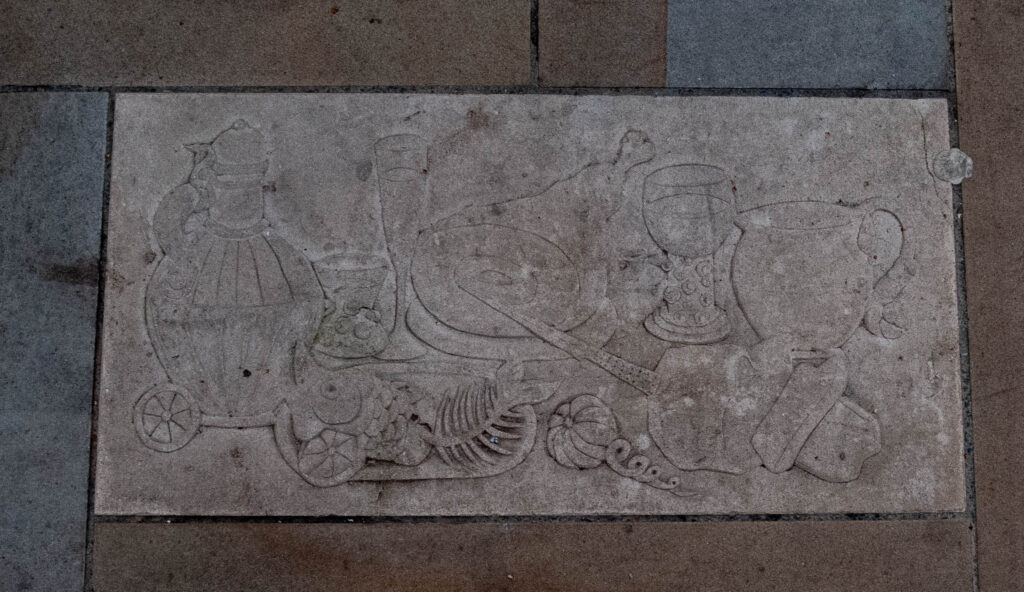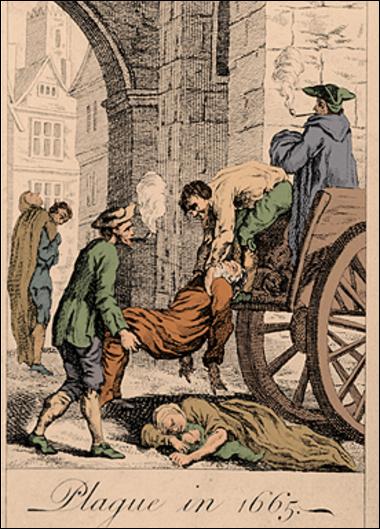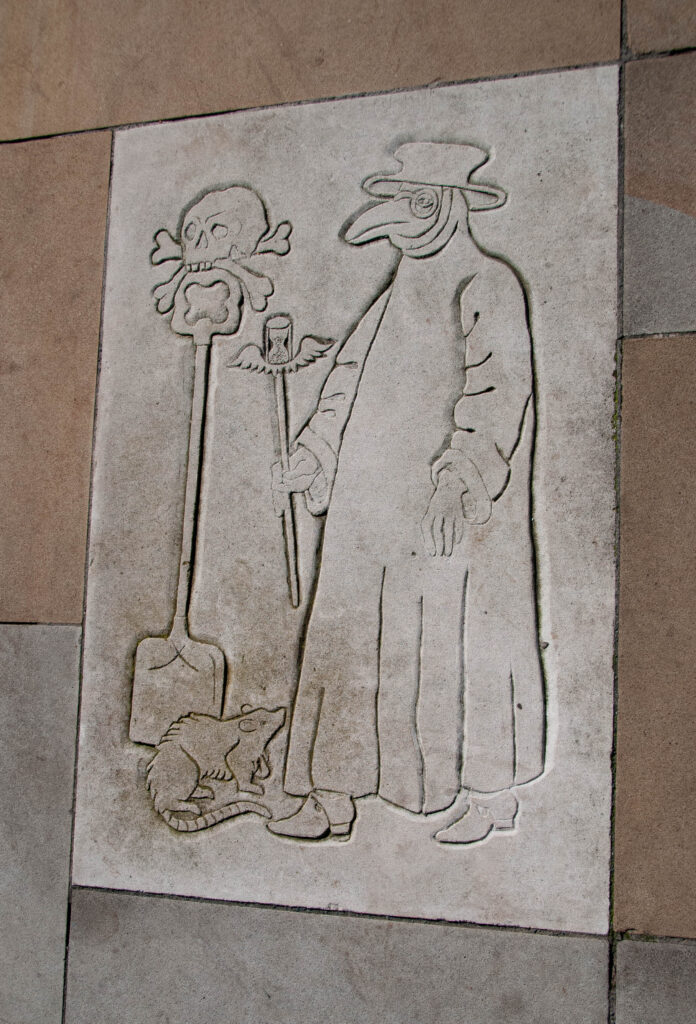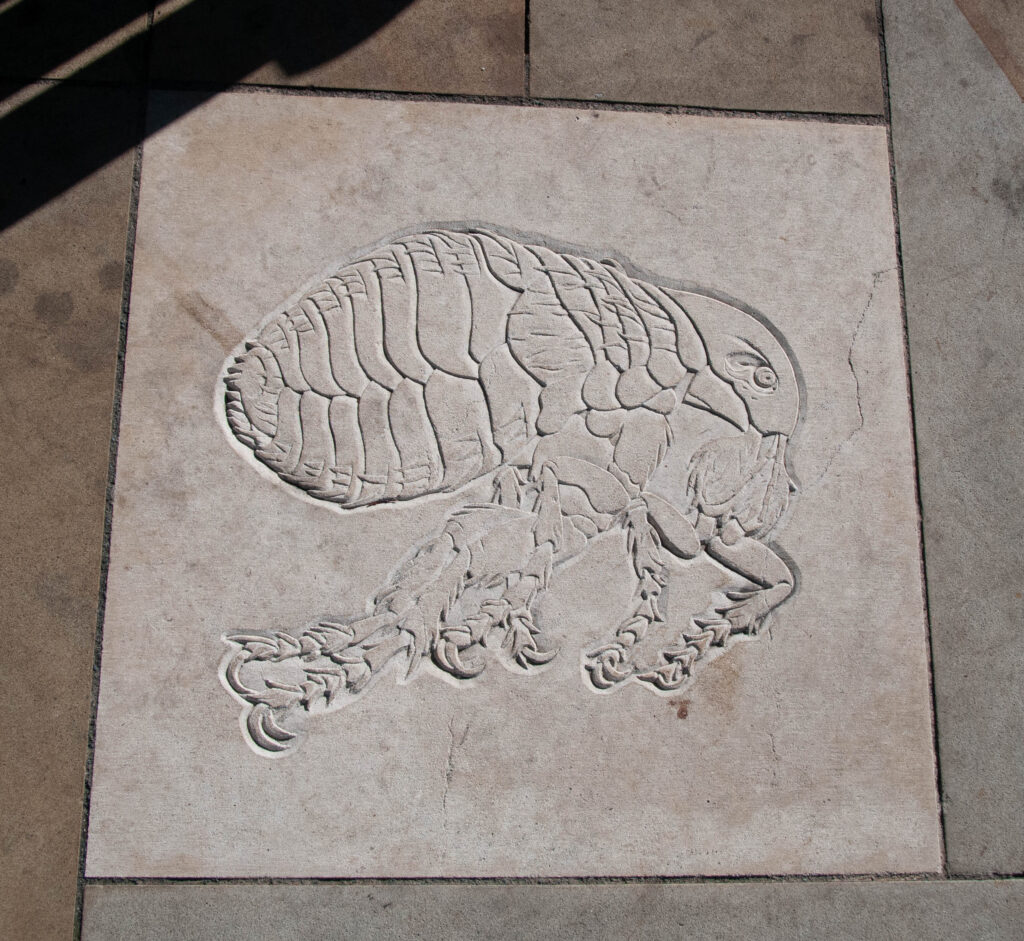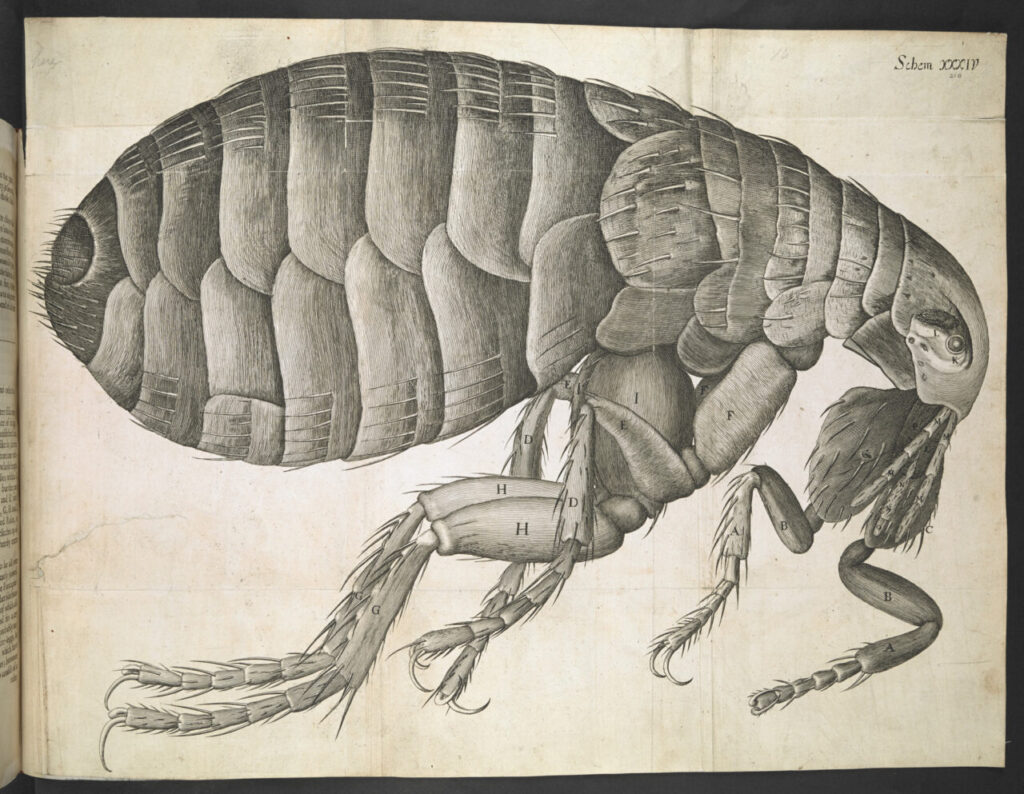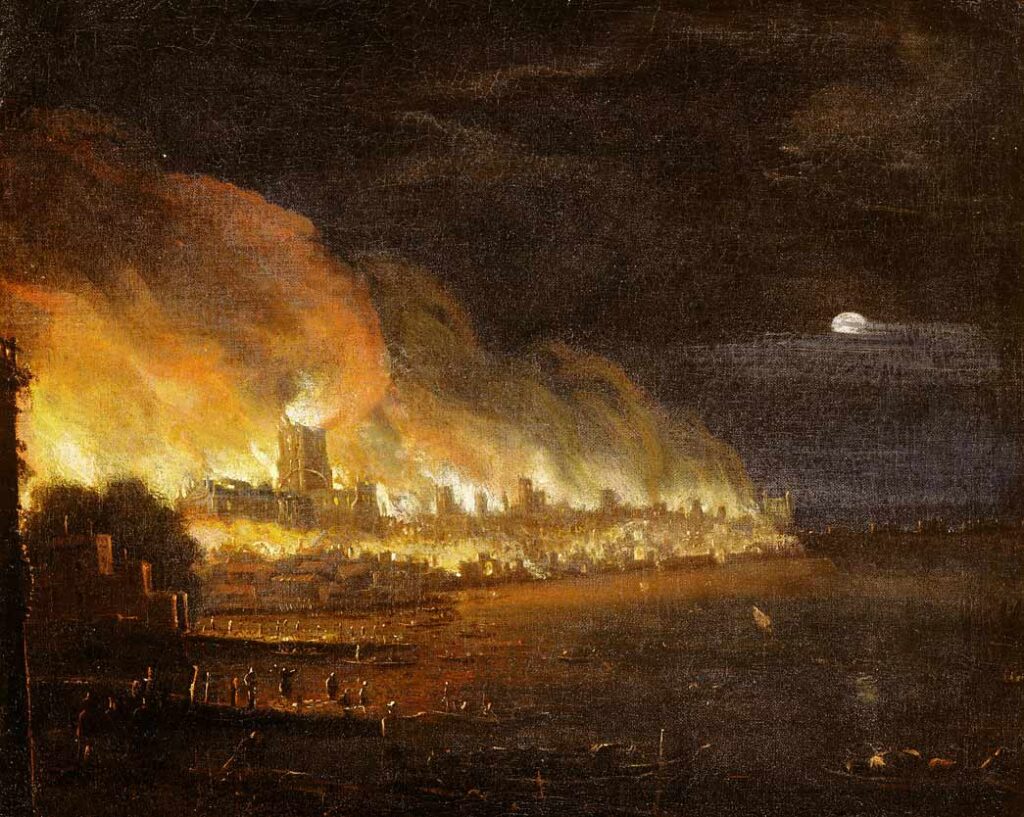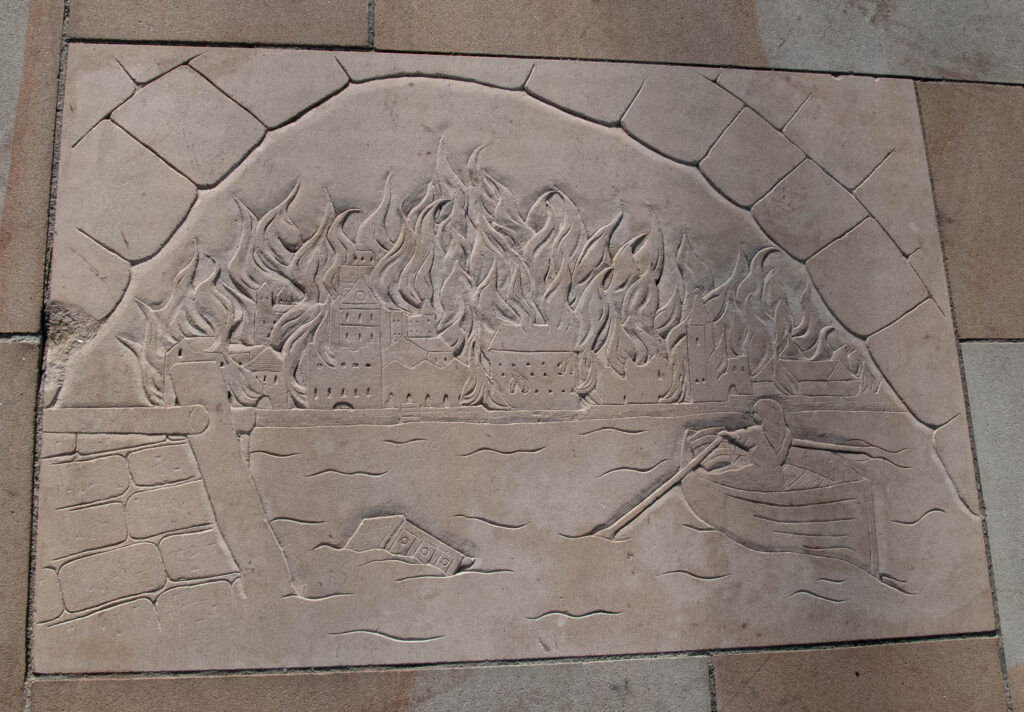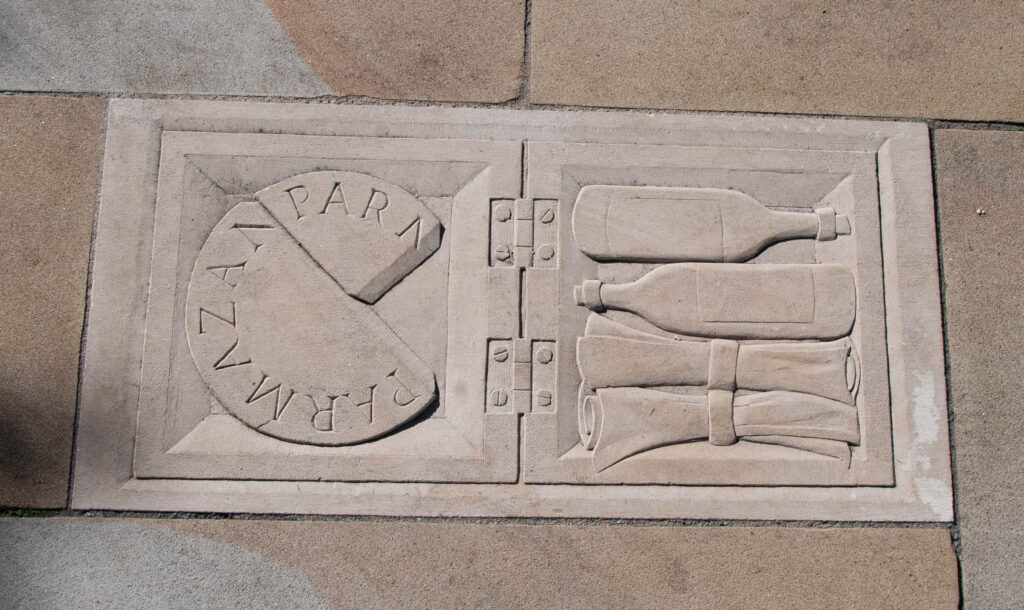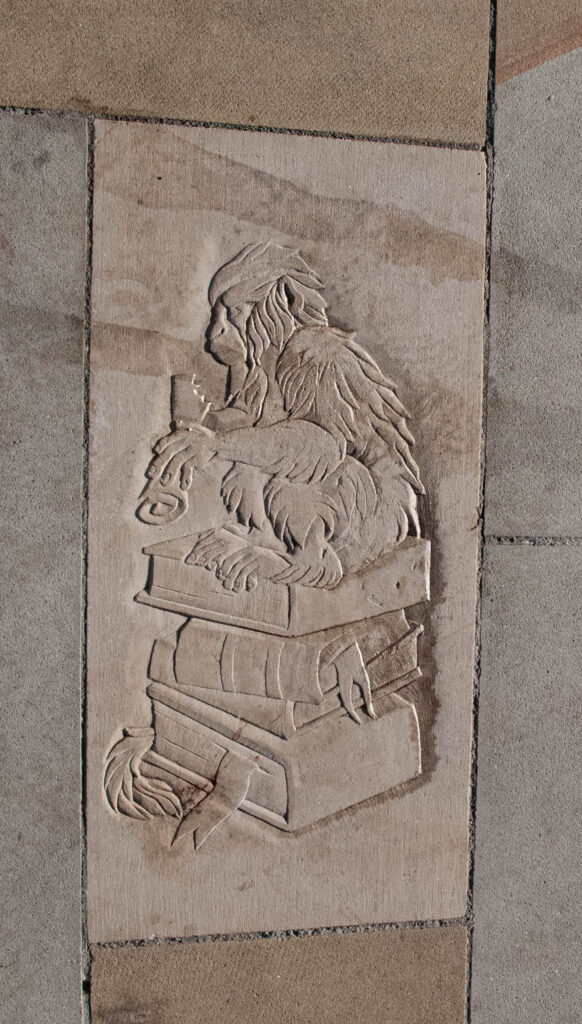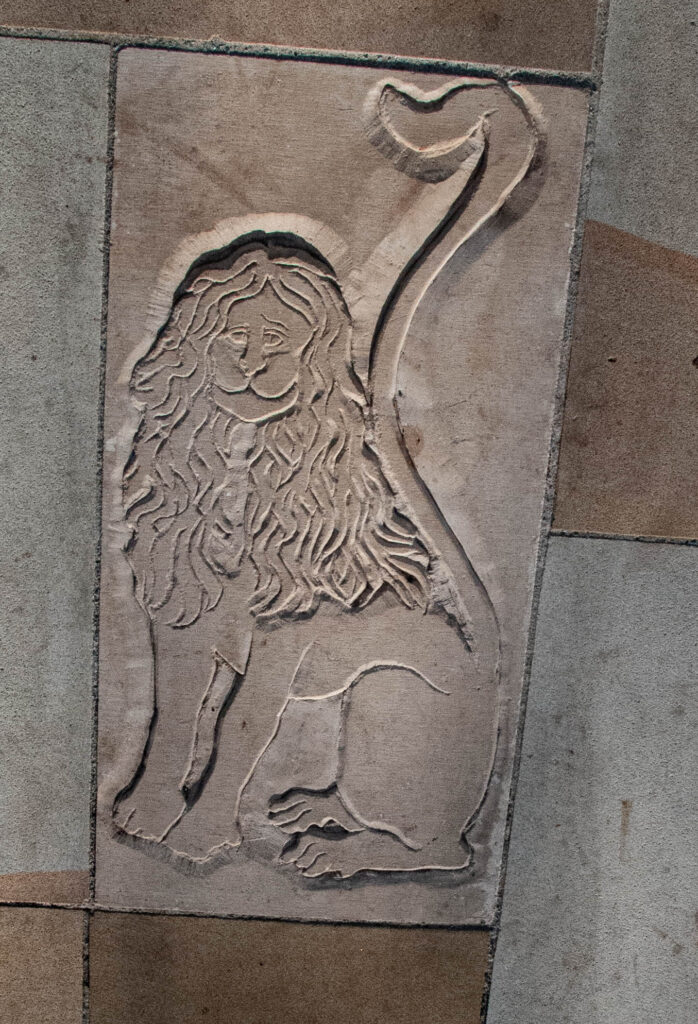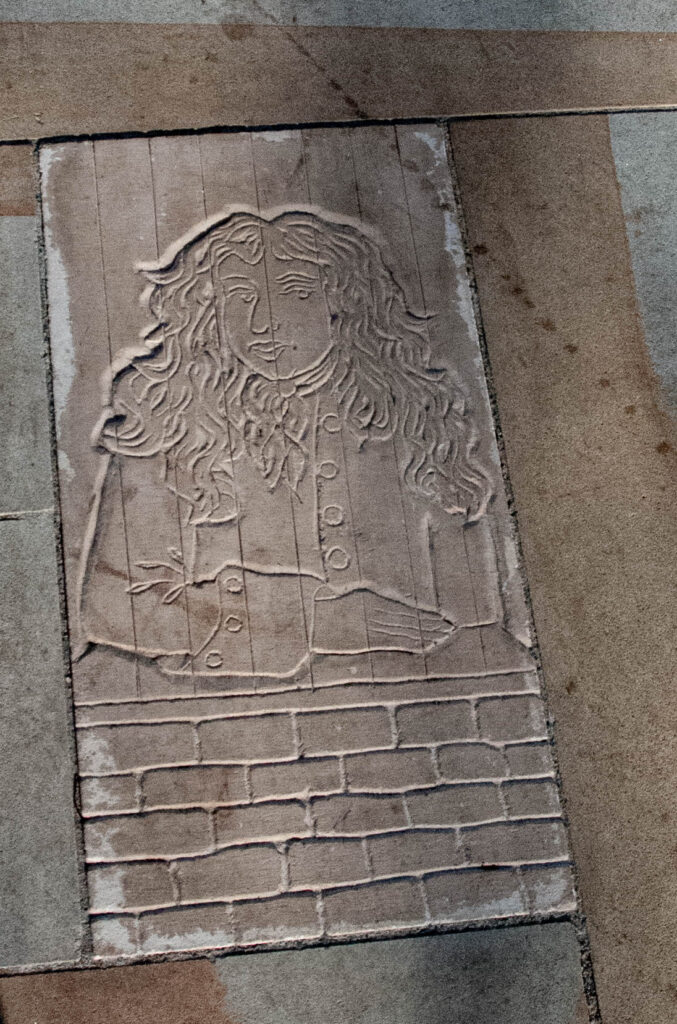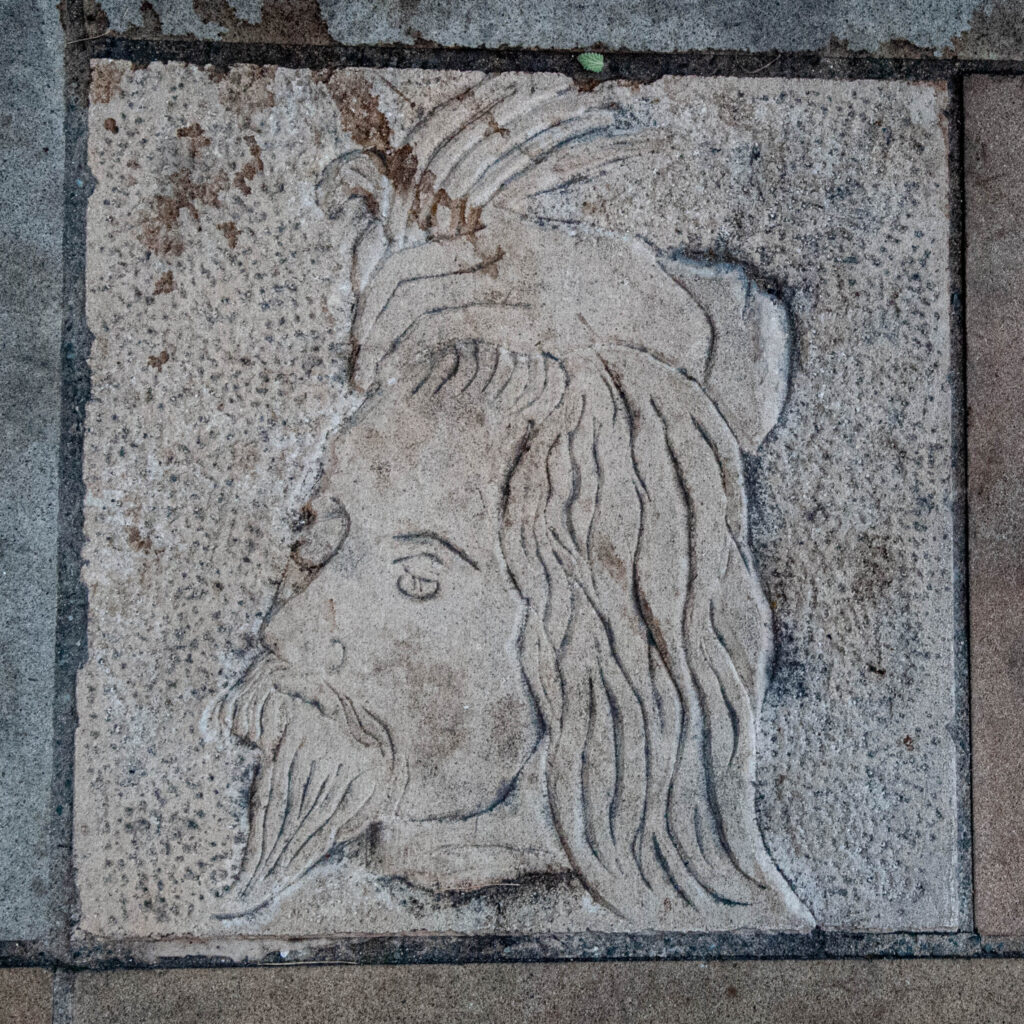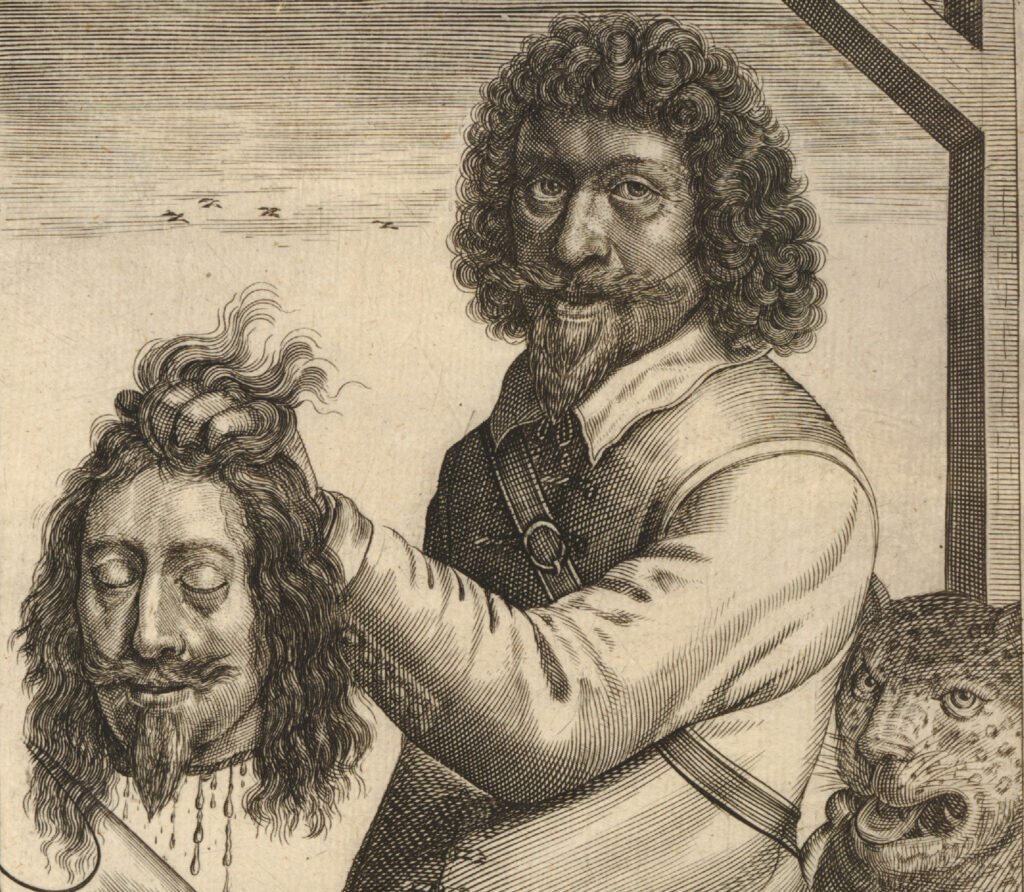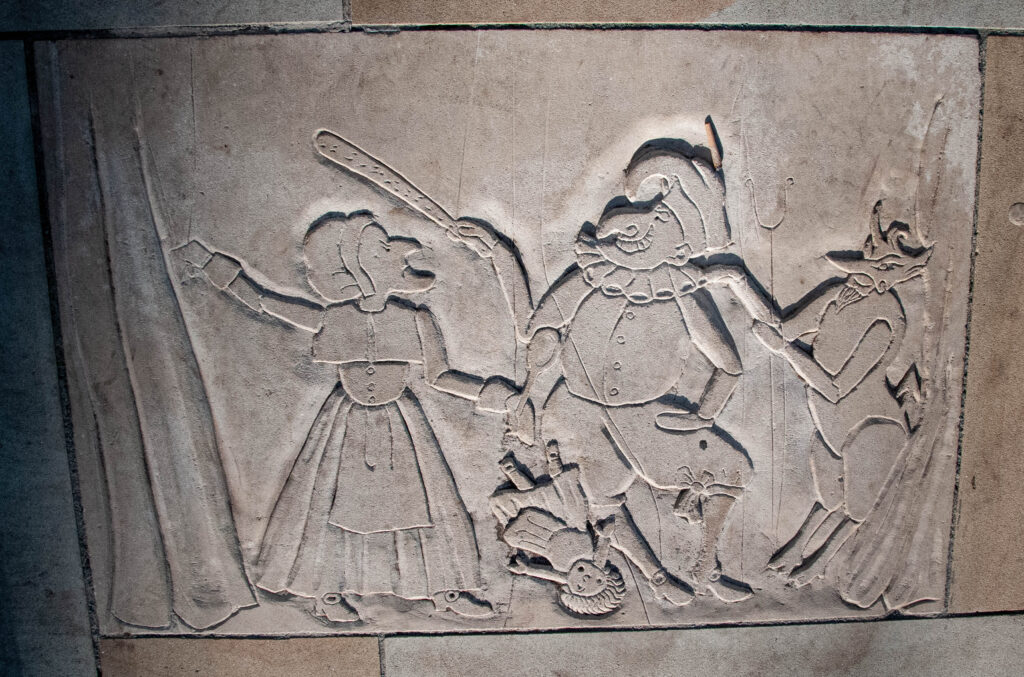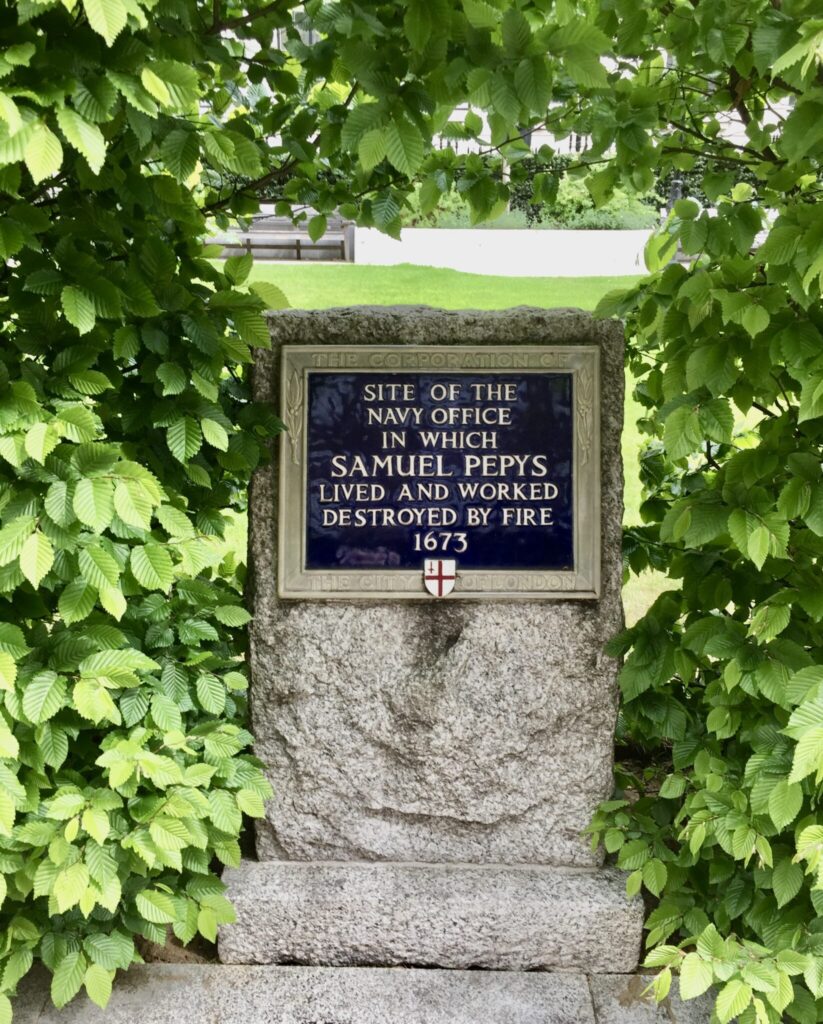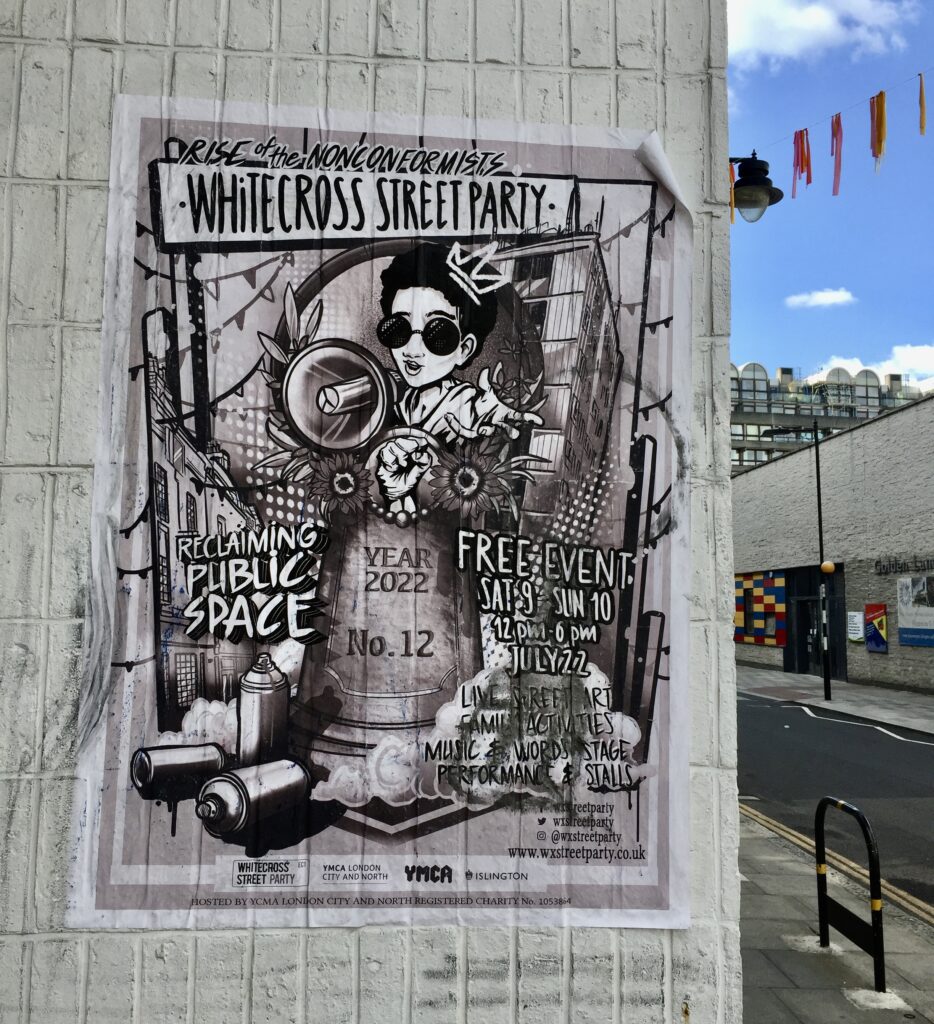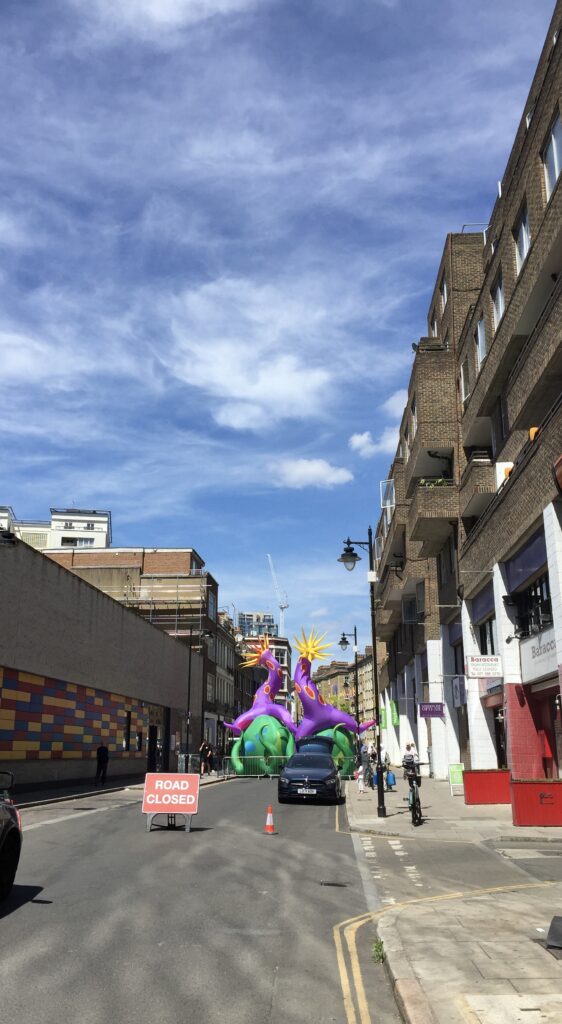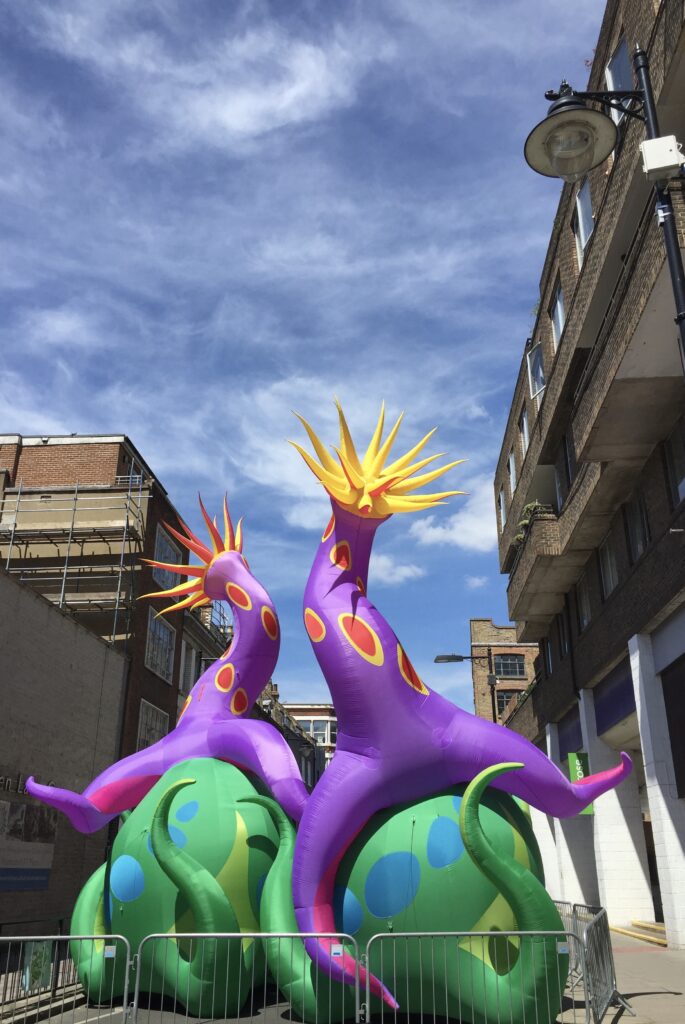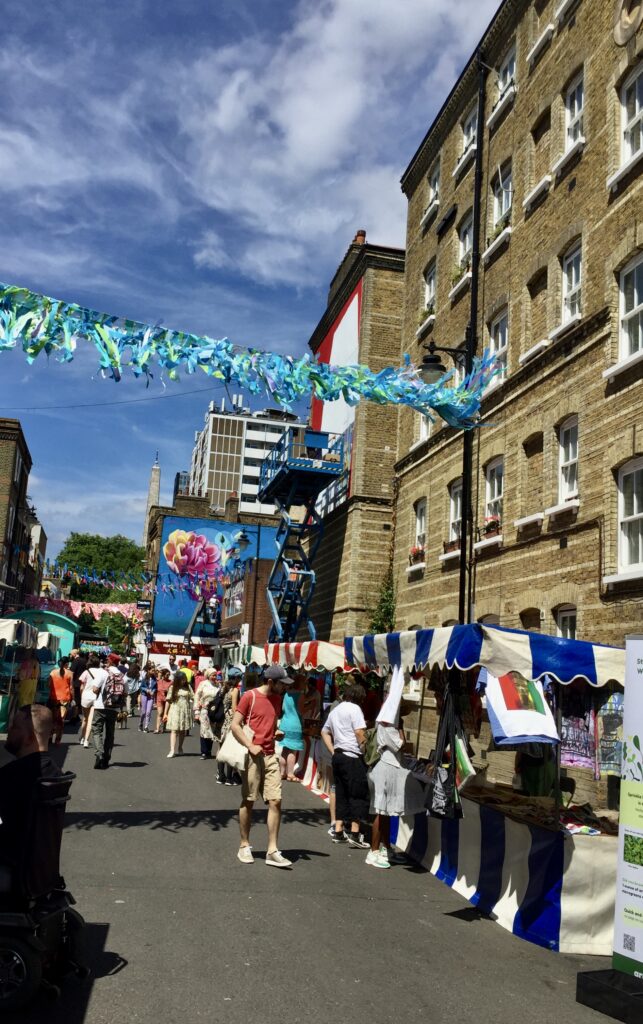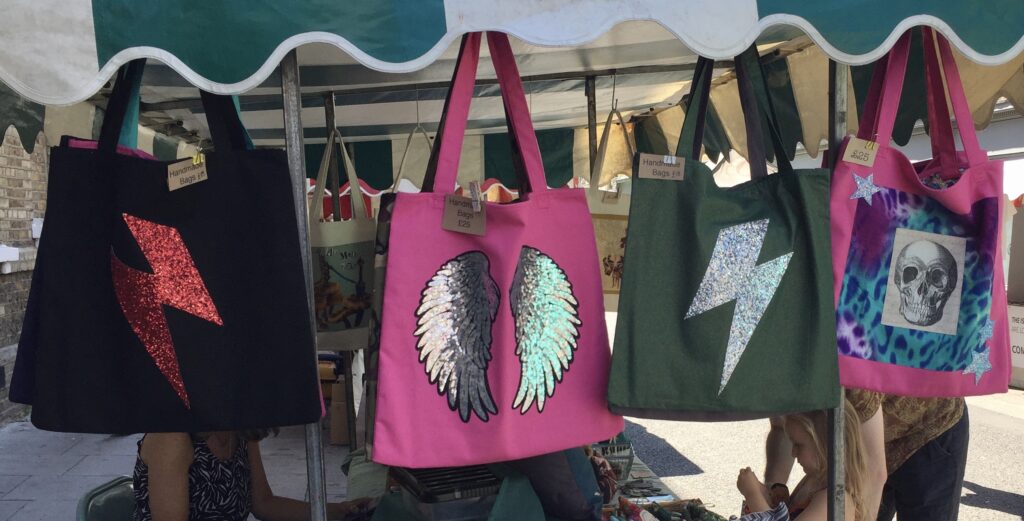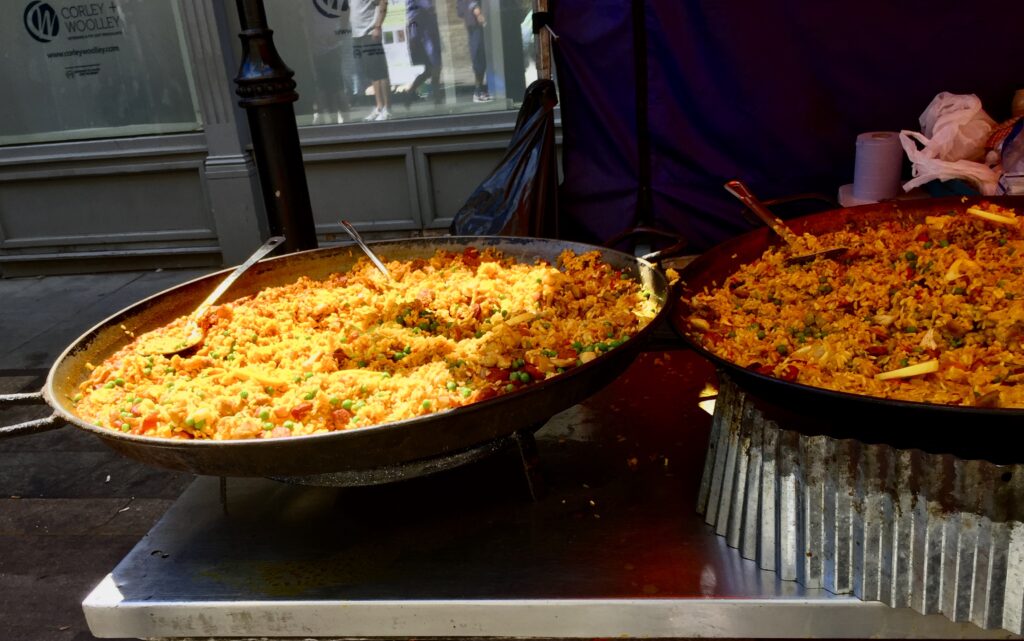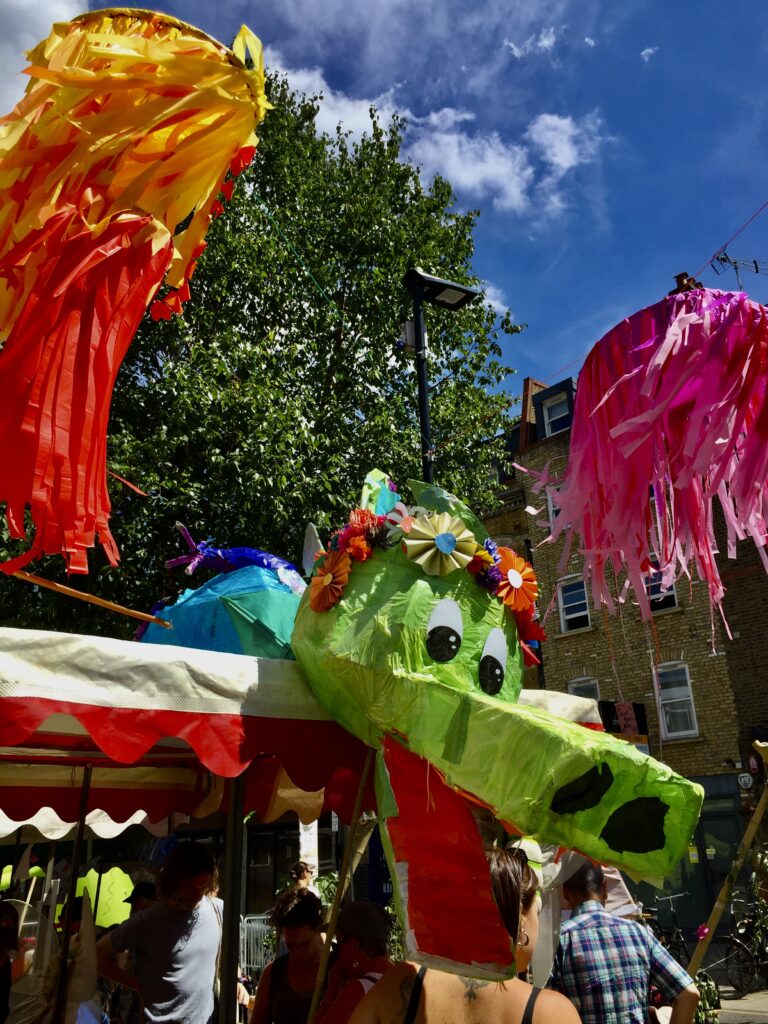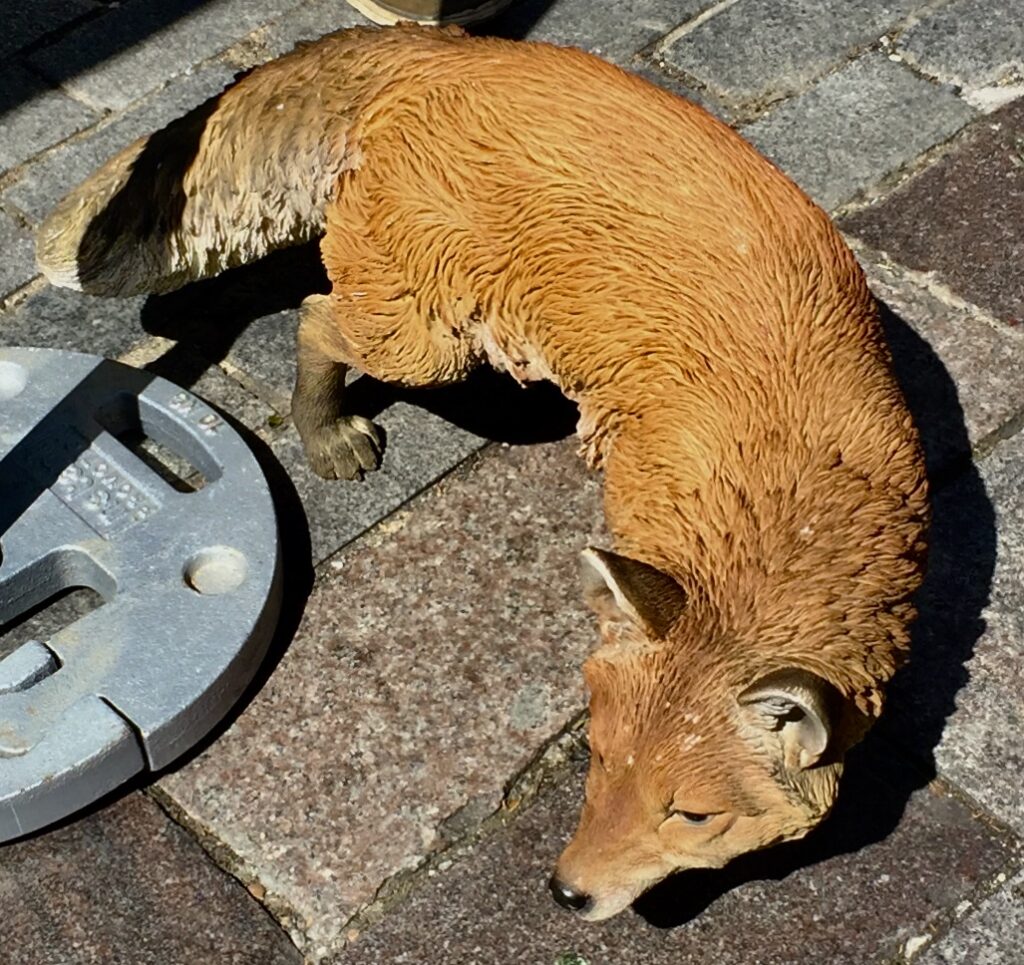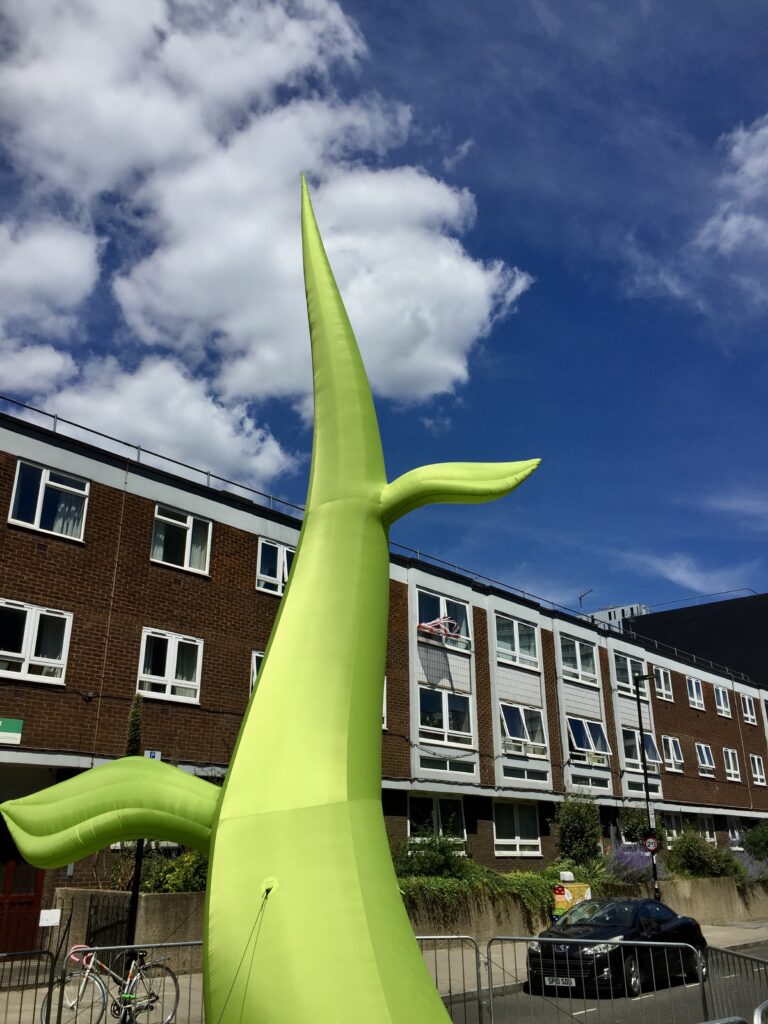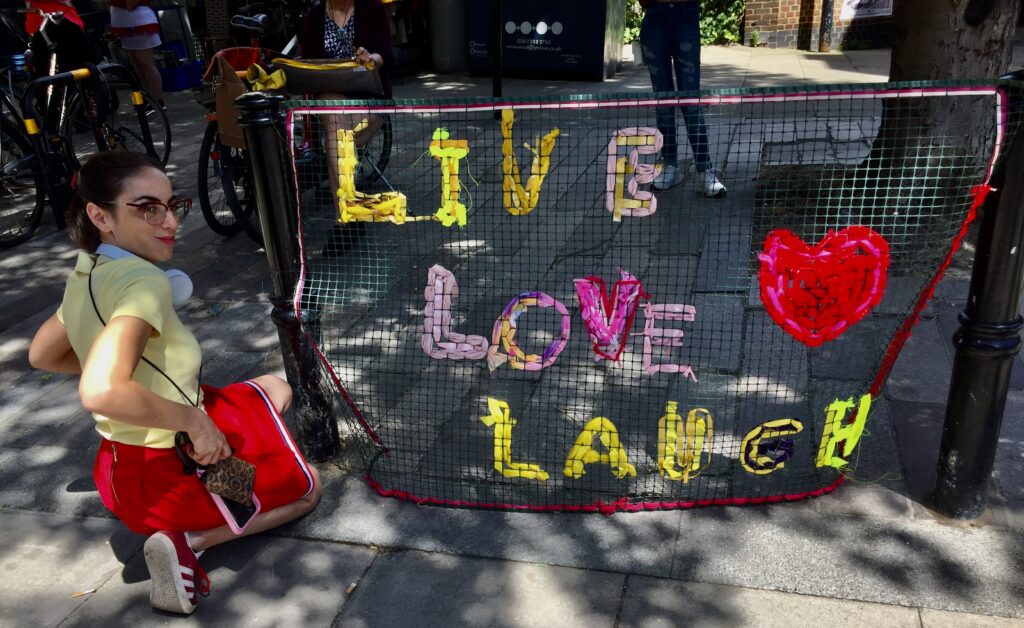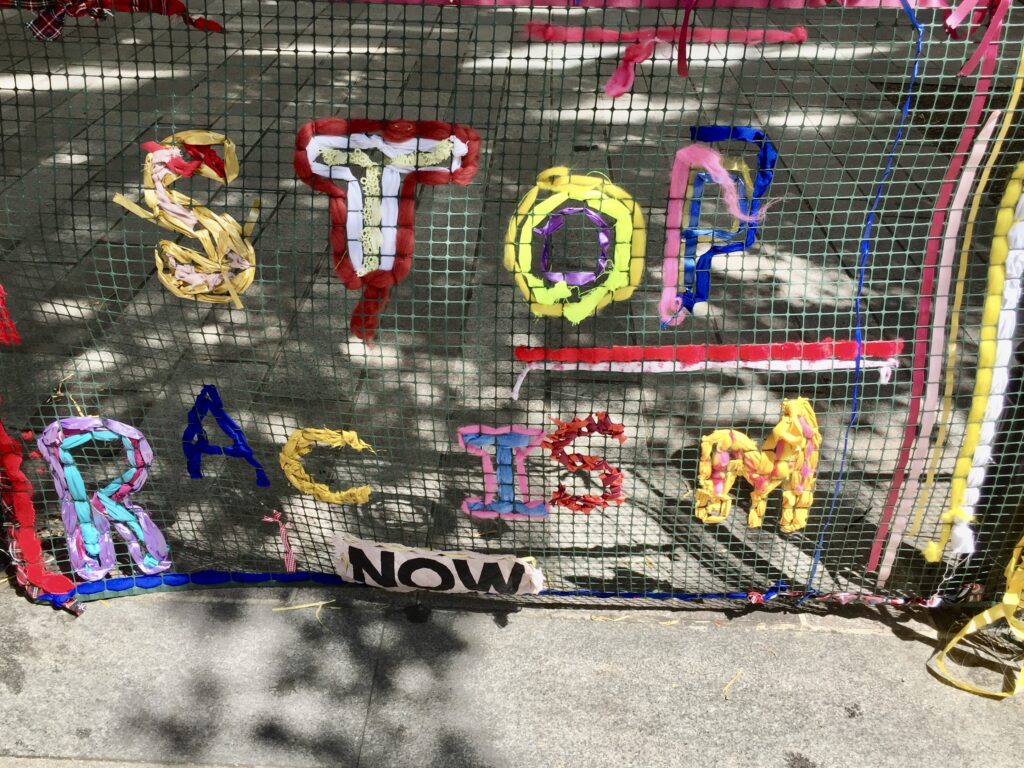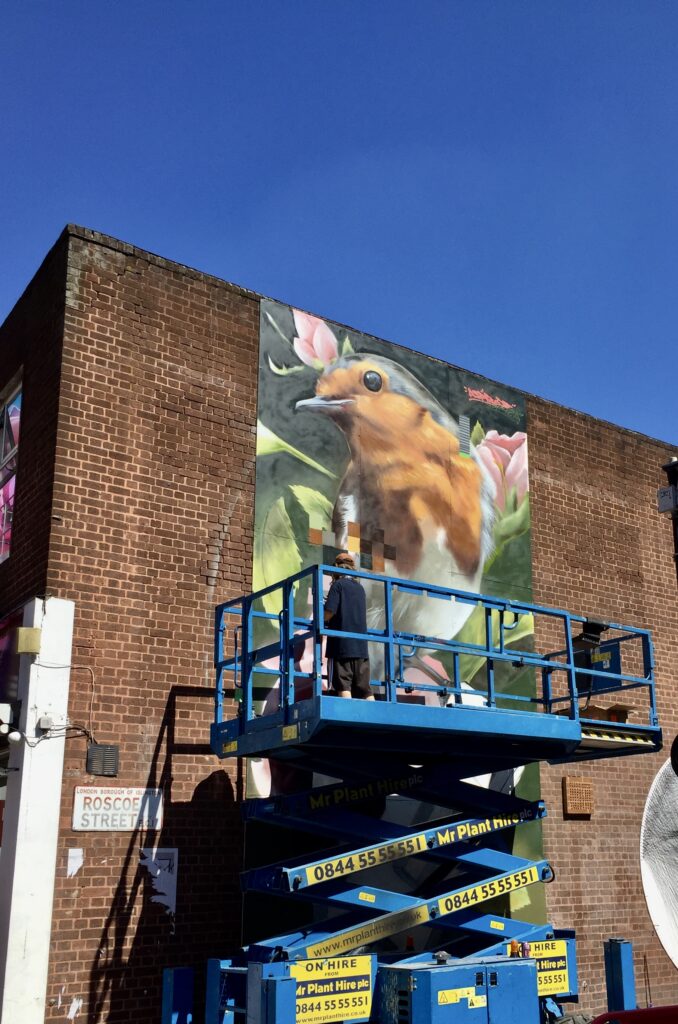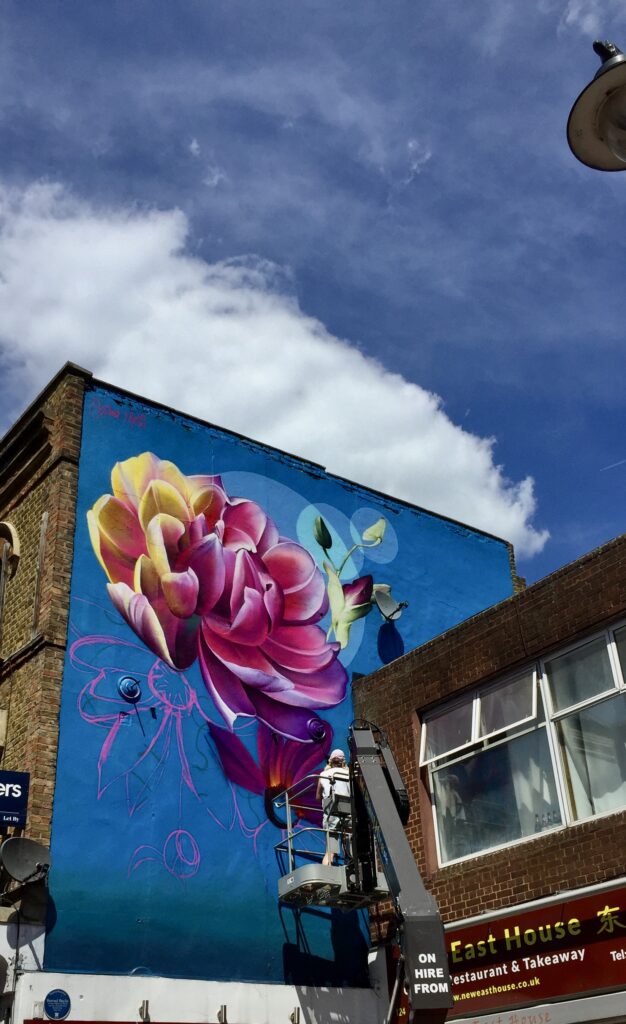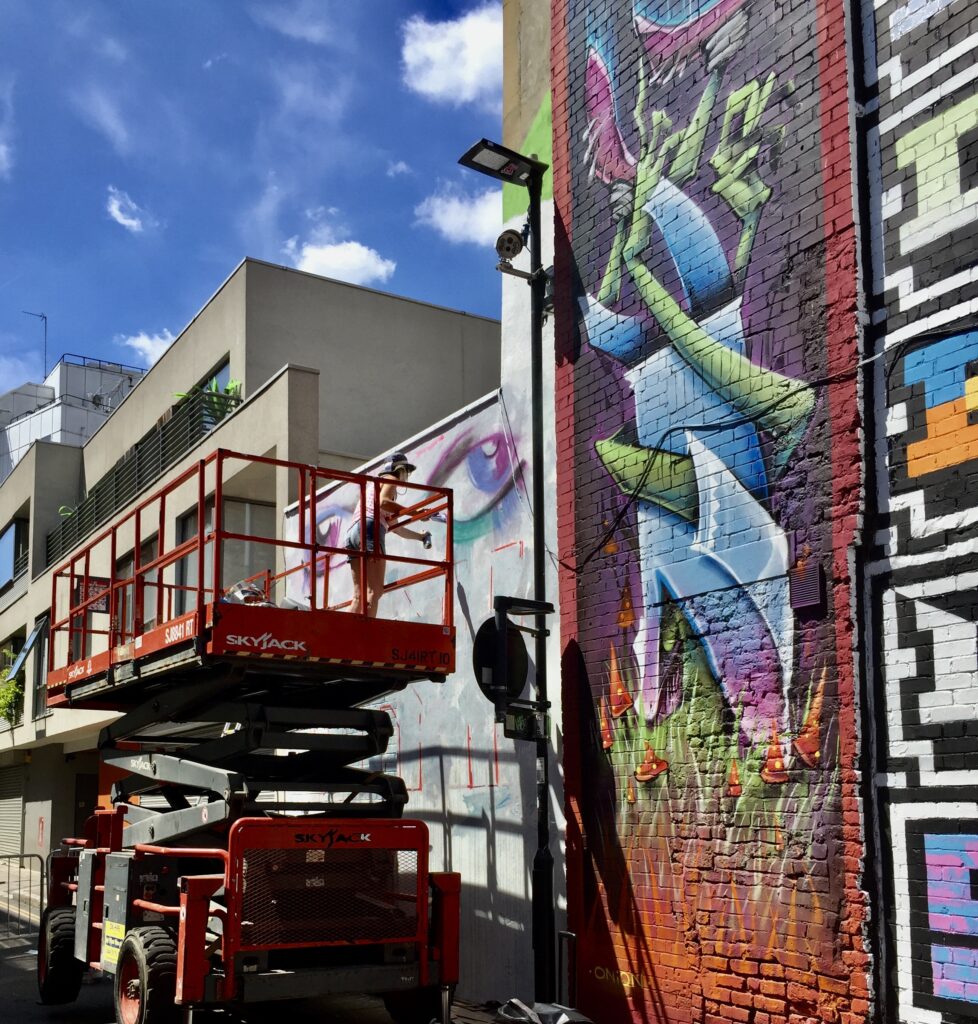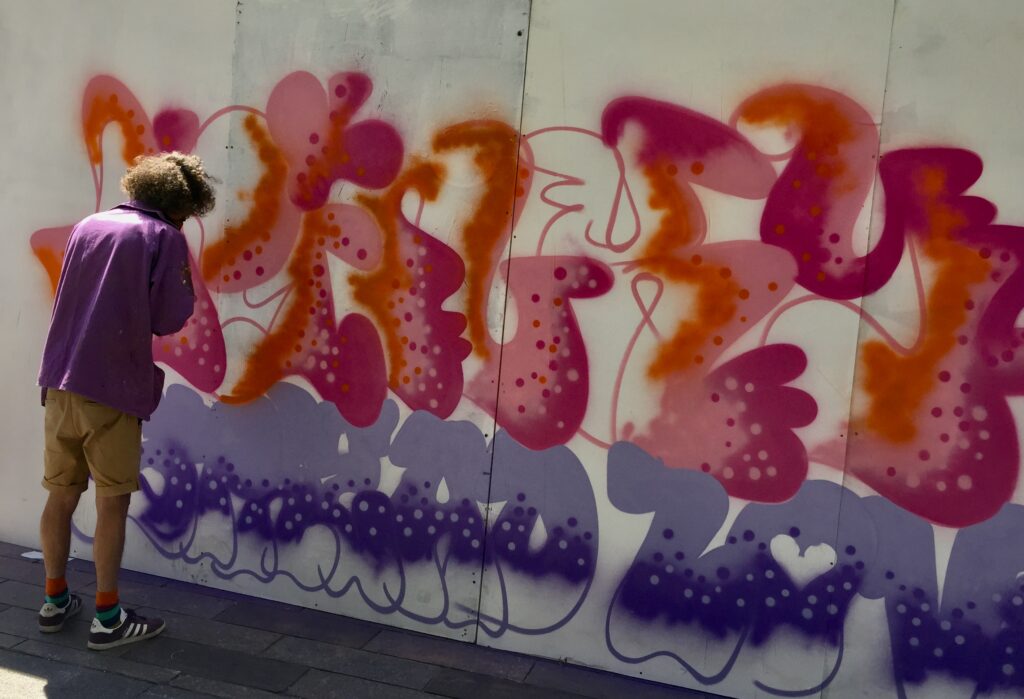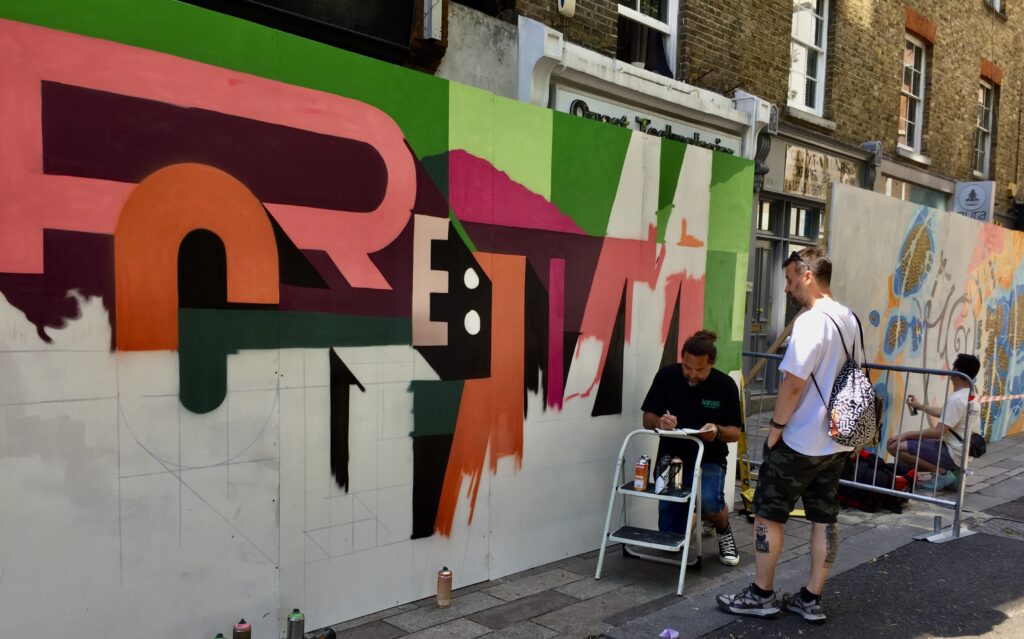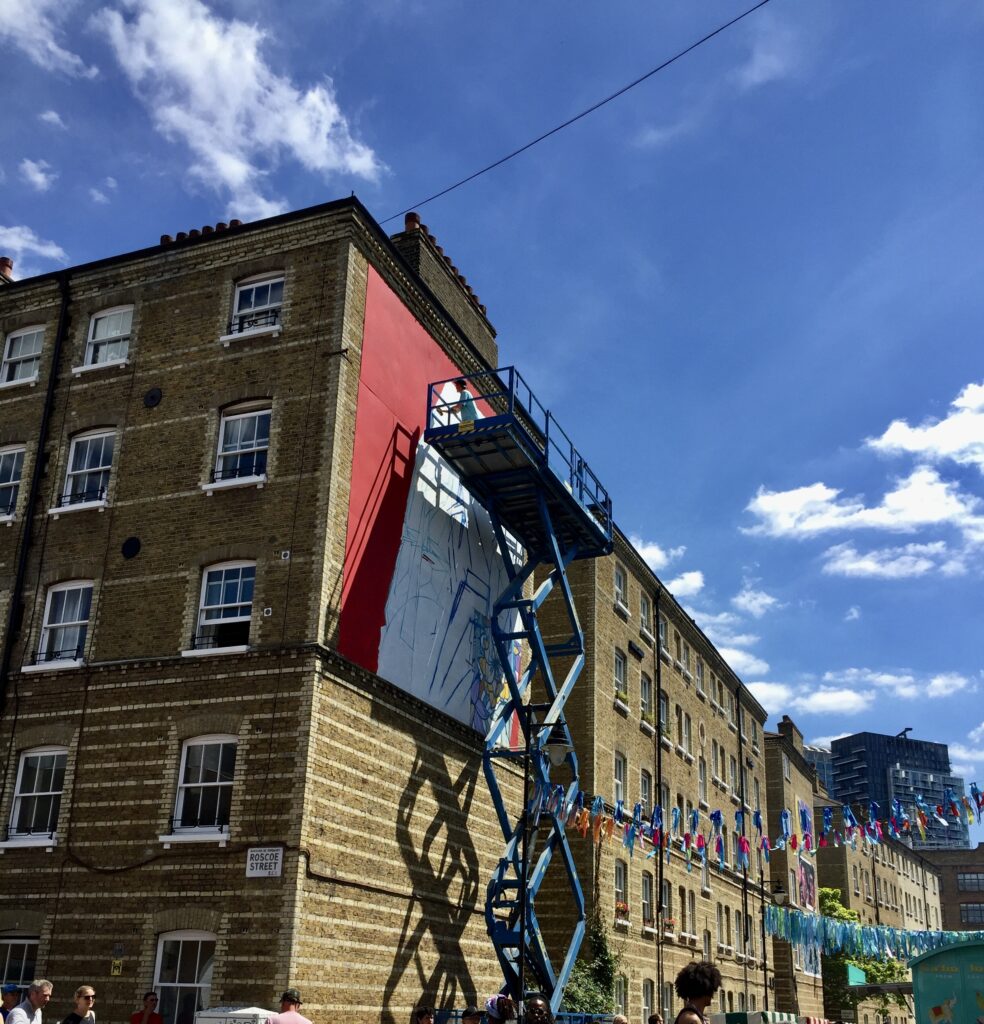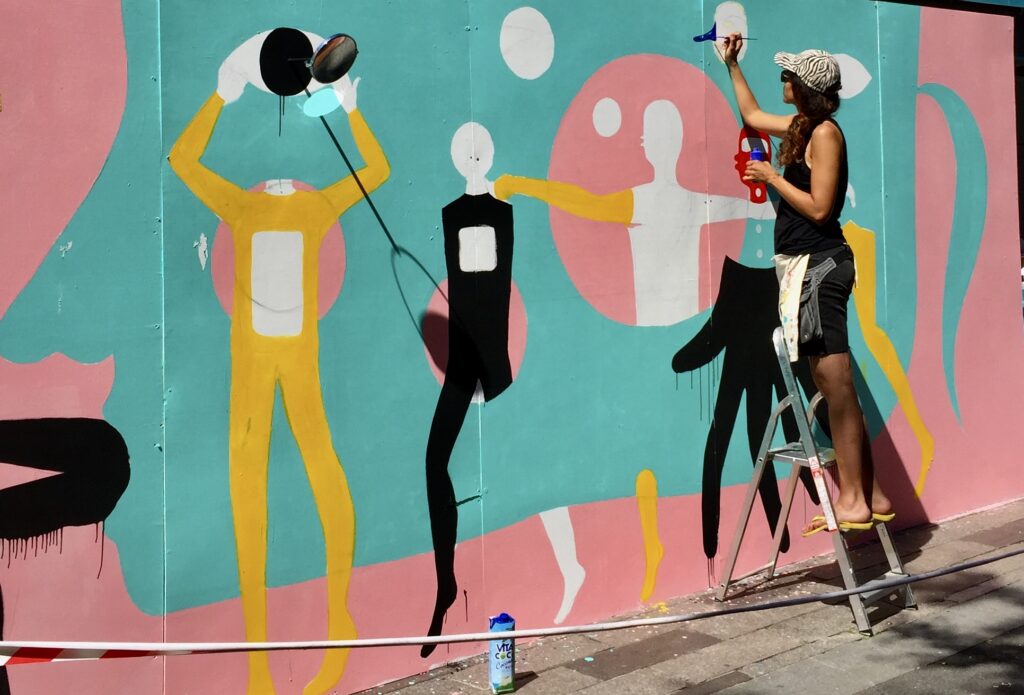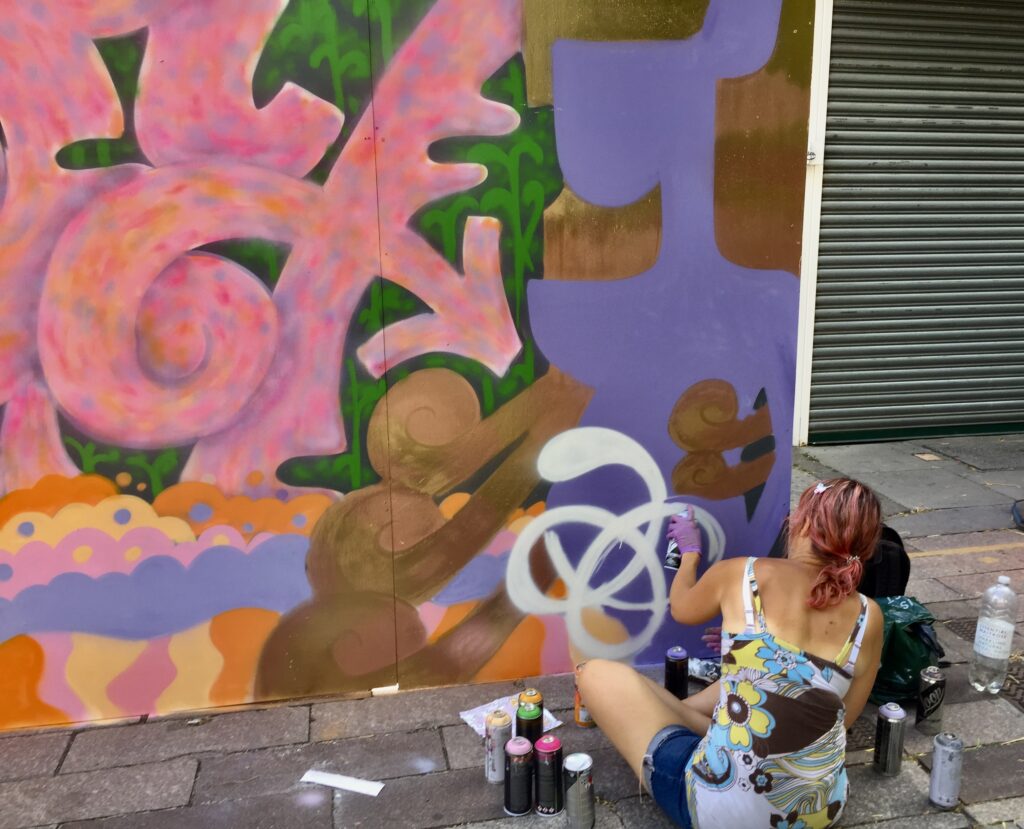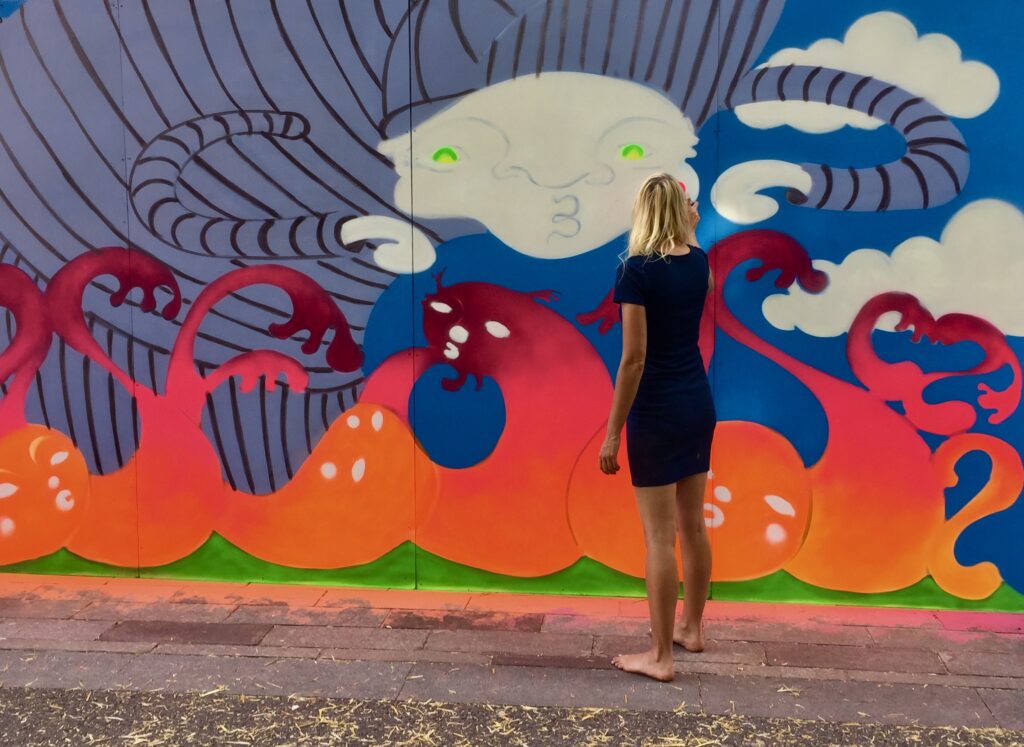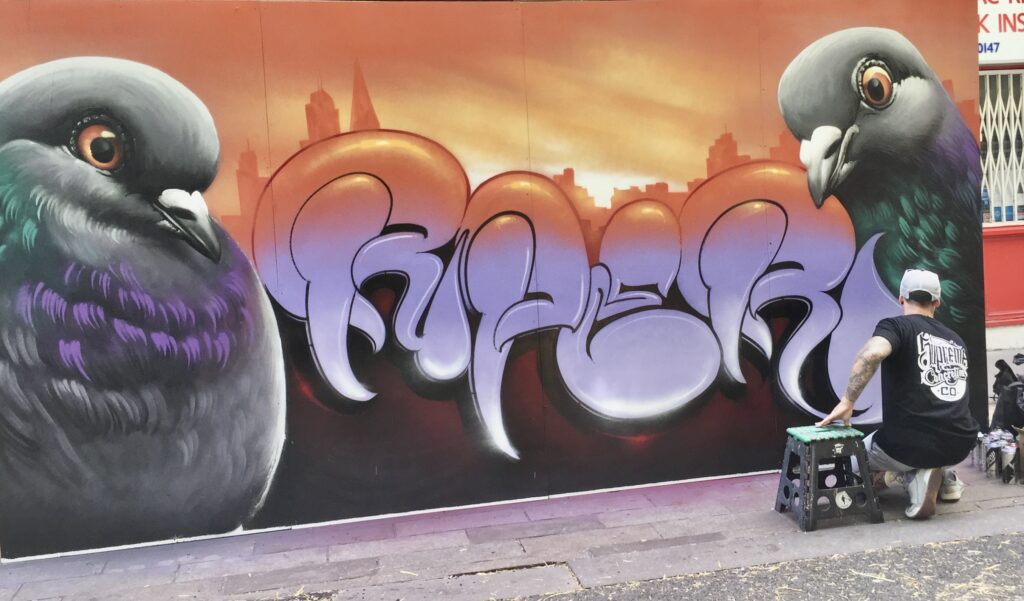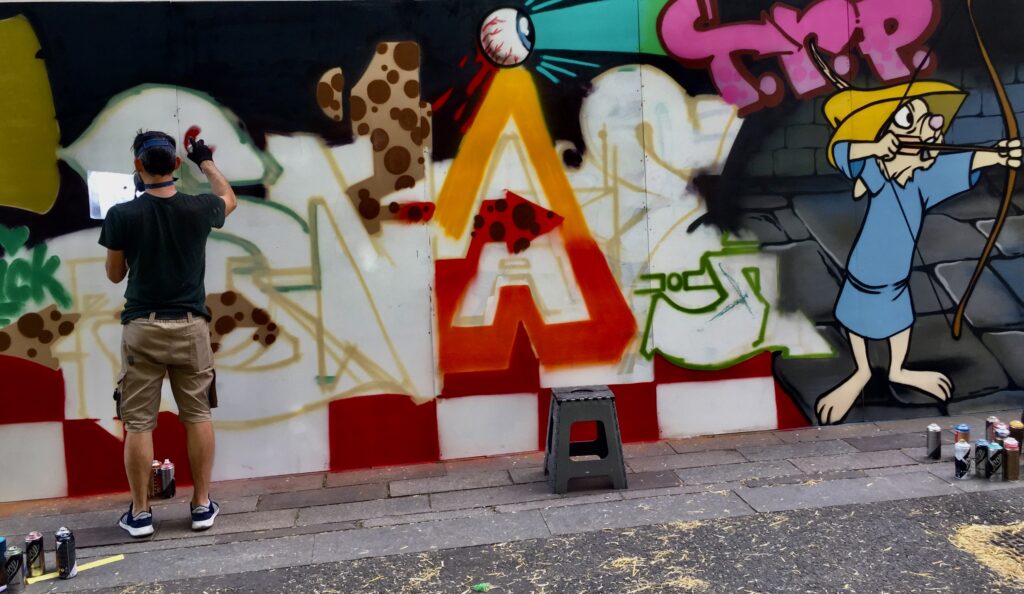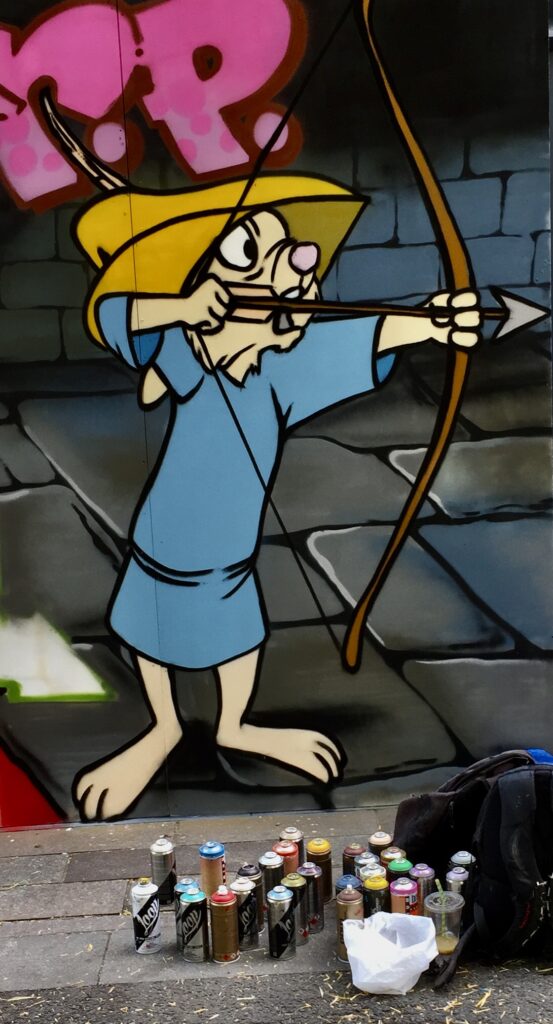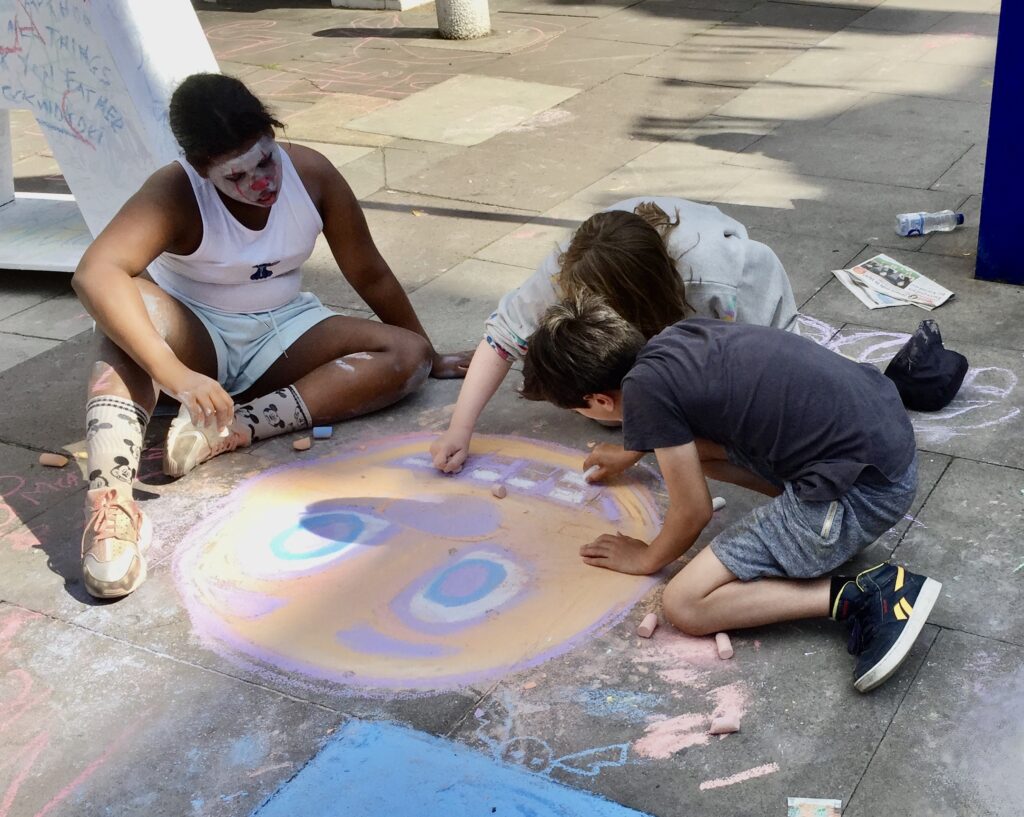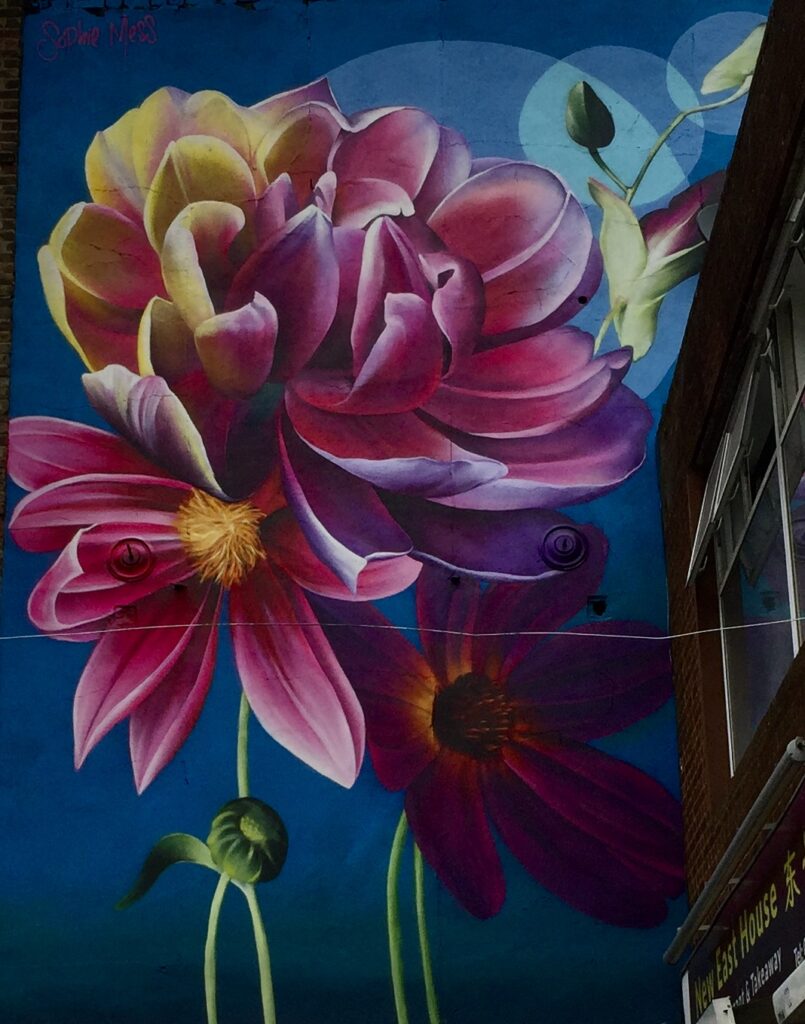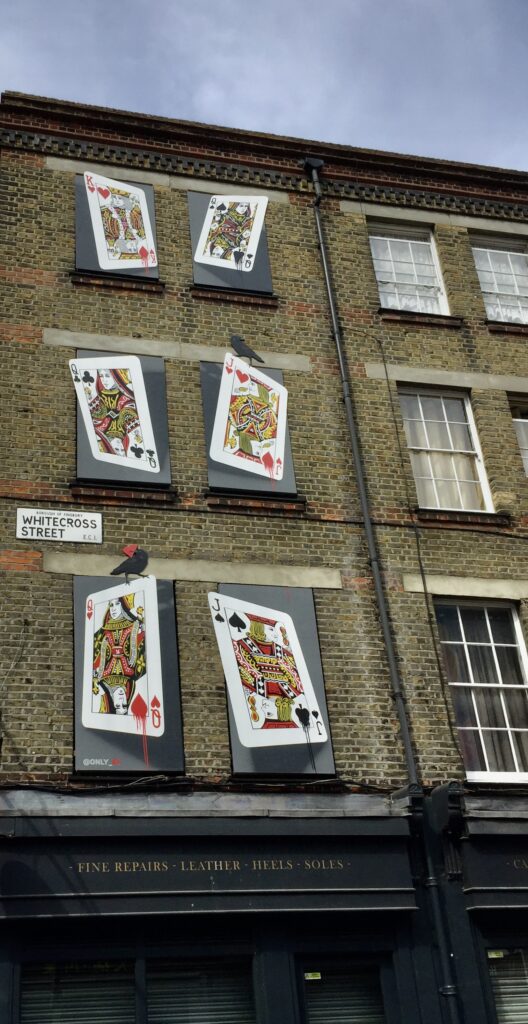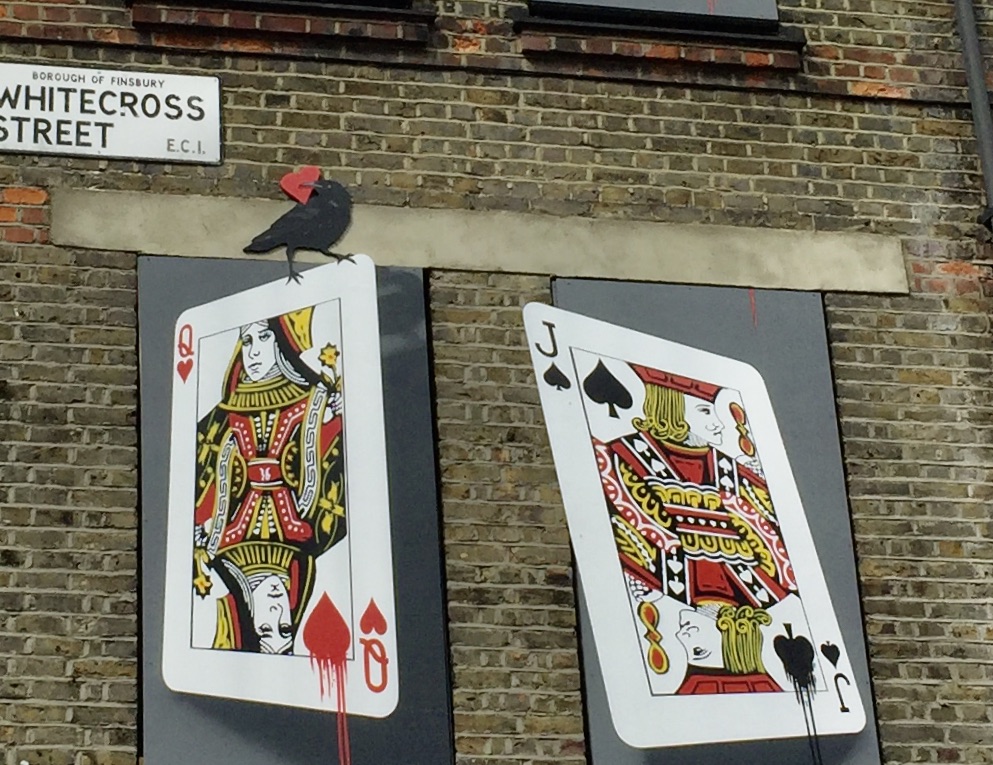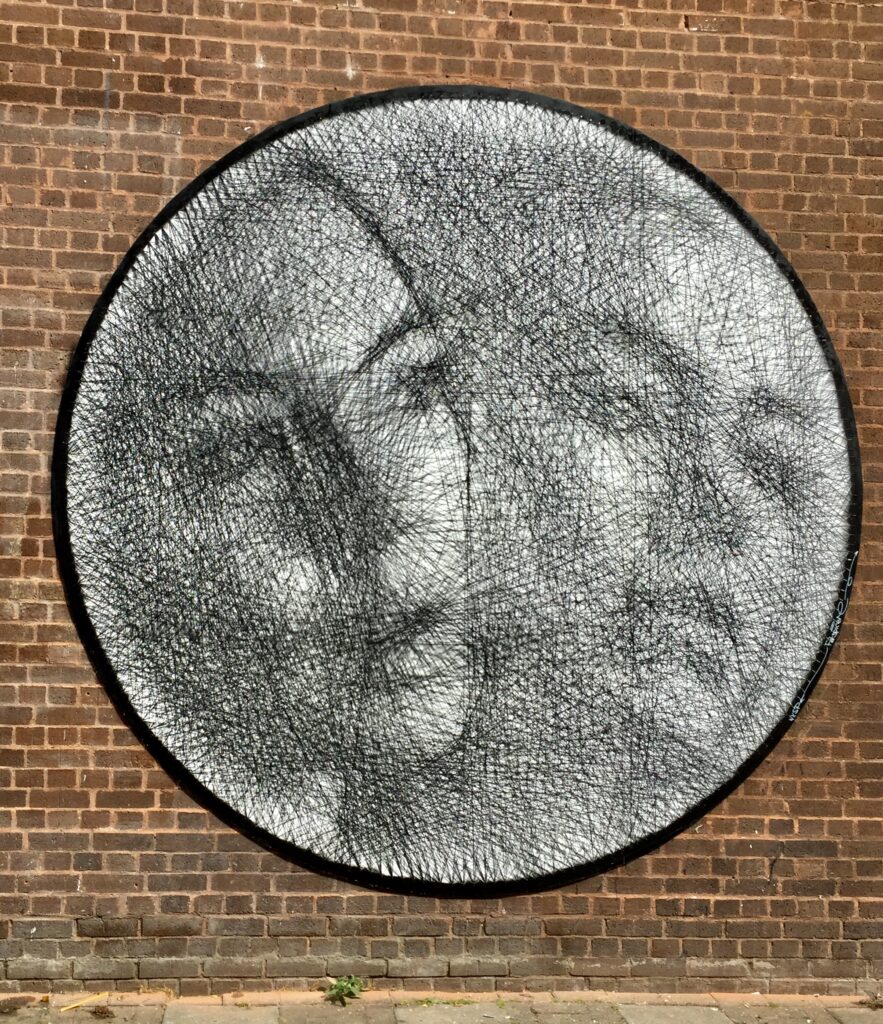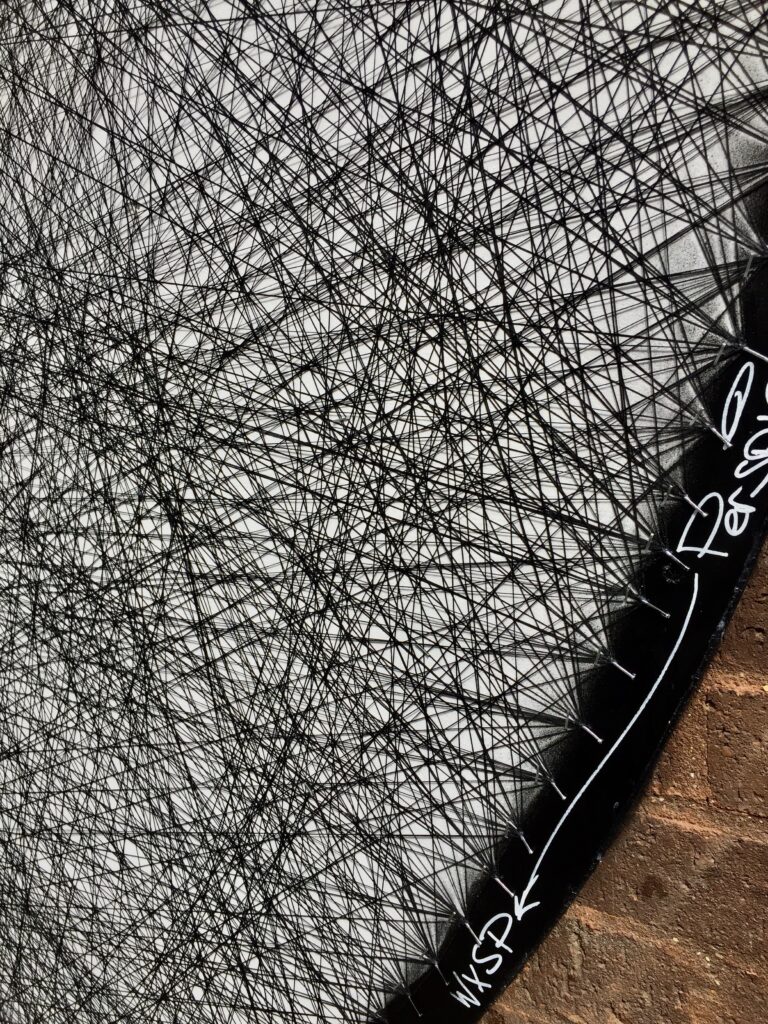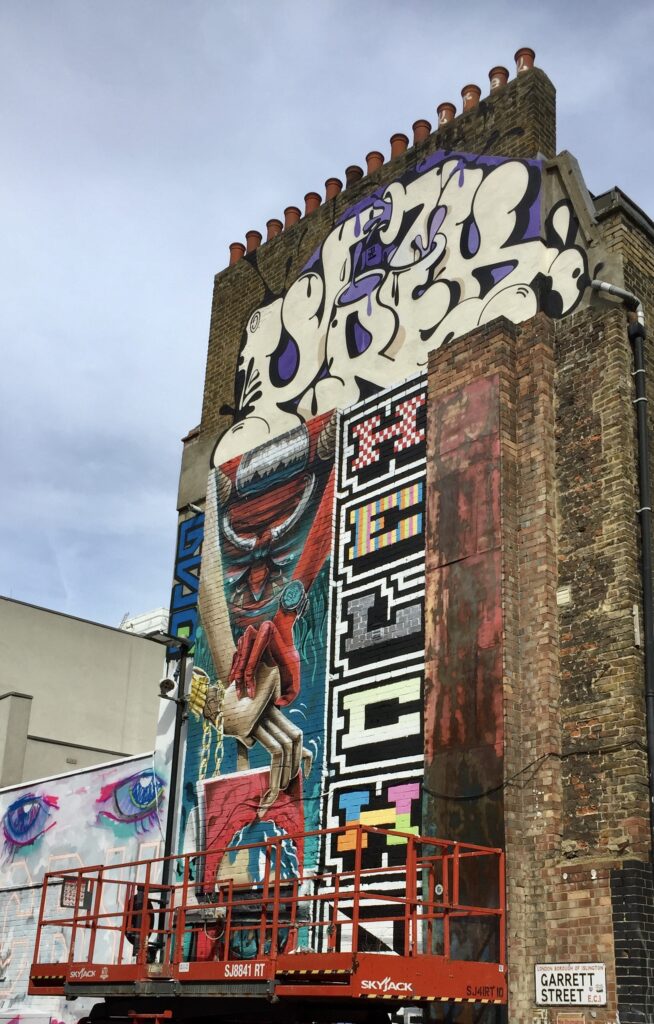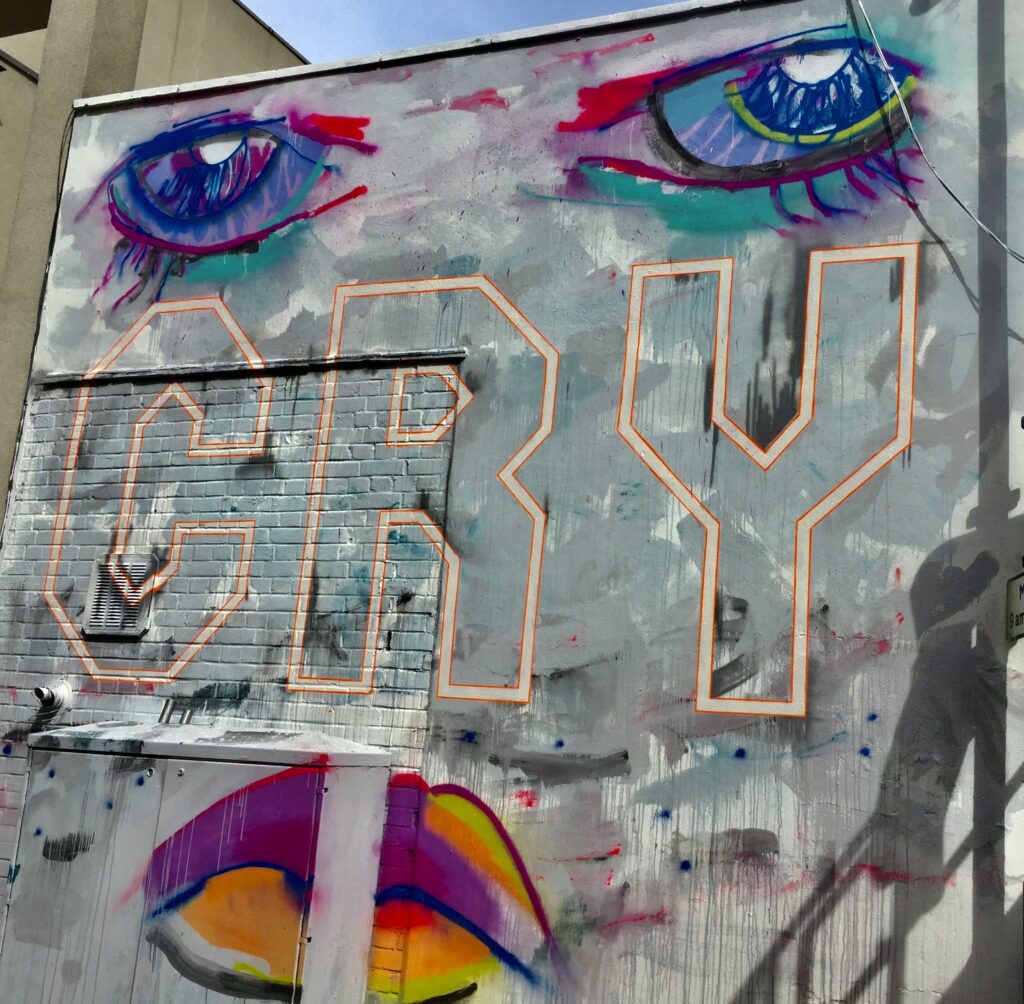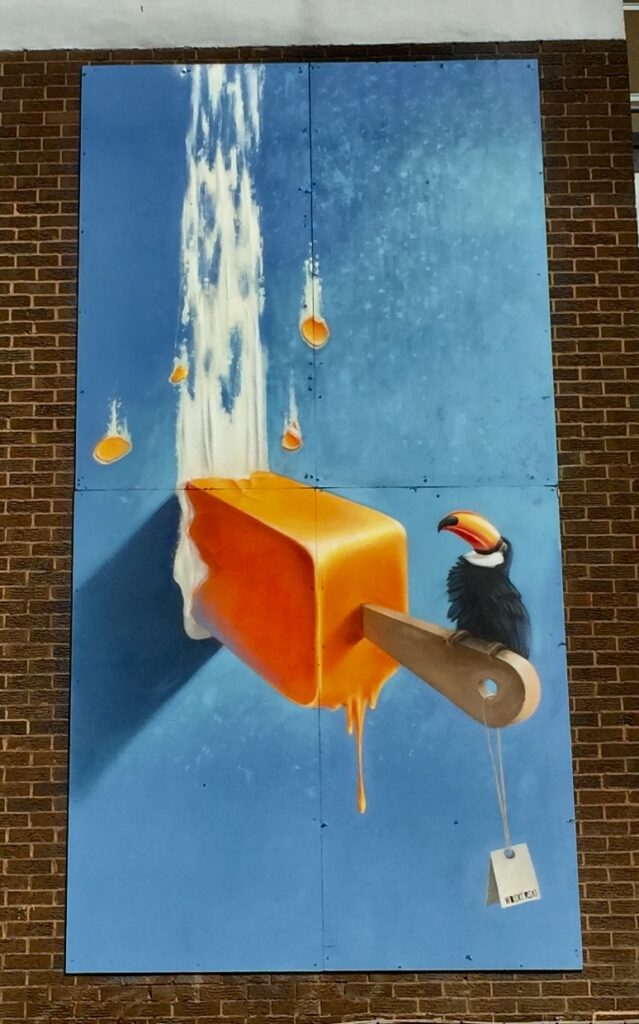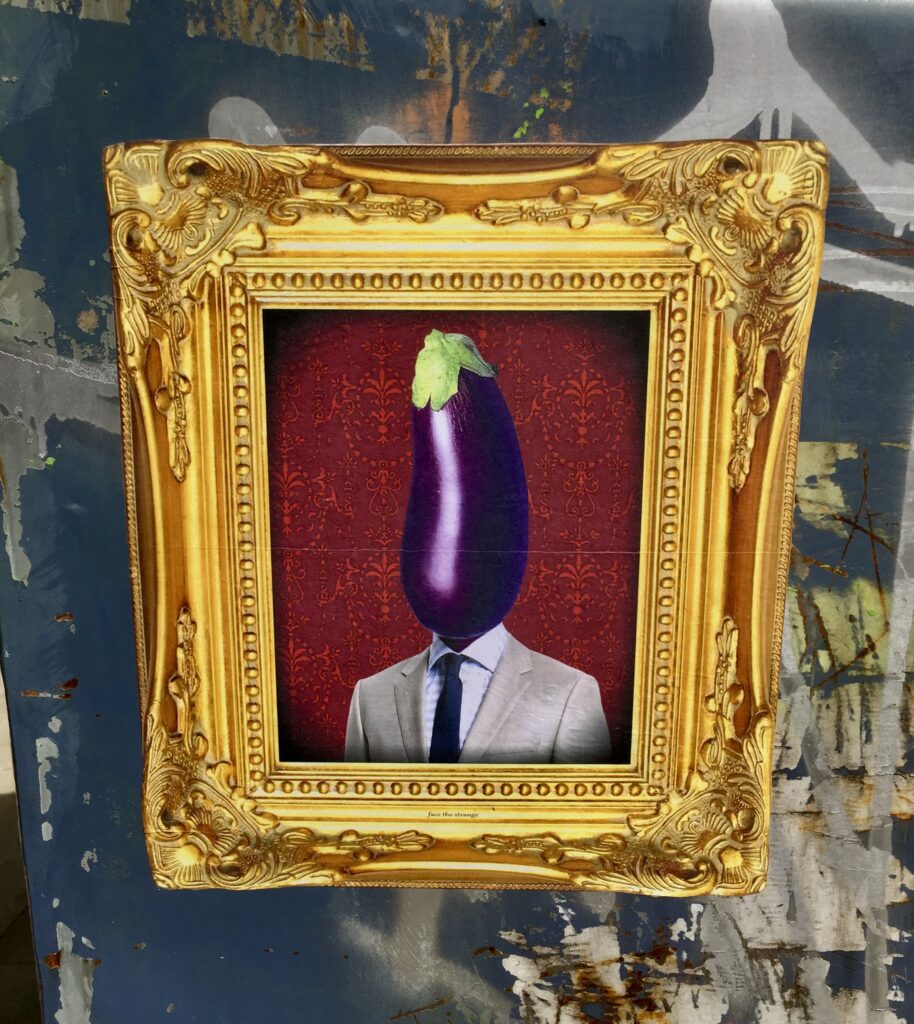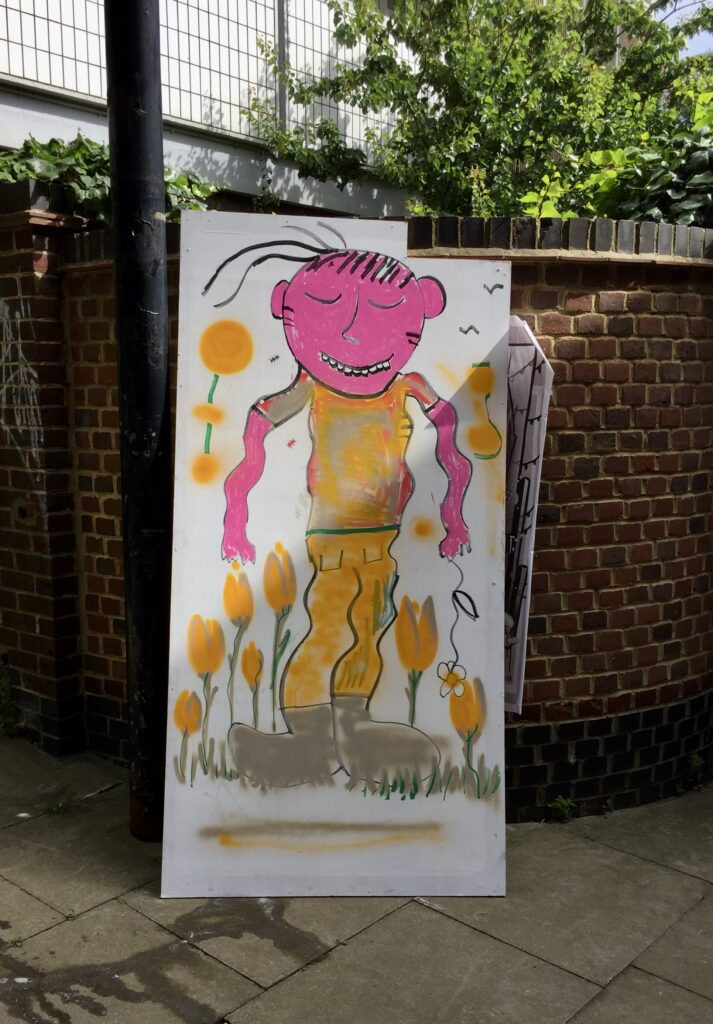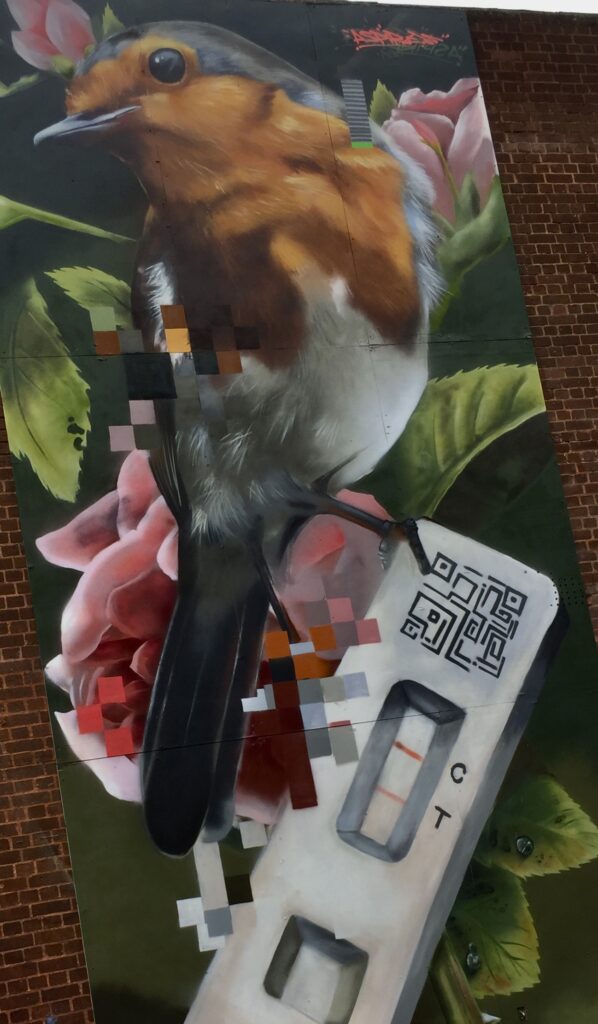To Pepys, music wasn’t just a pleasant pastime; it was also an art of great significance – something that could change lives and affect everyone who heard it. He was a keen amateur, playing various instruments and studying singing – he even designed a room in his home specially for music-making.
Here are some of the instruments that Pepys played – a fiddle, a flageolet and recorders …
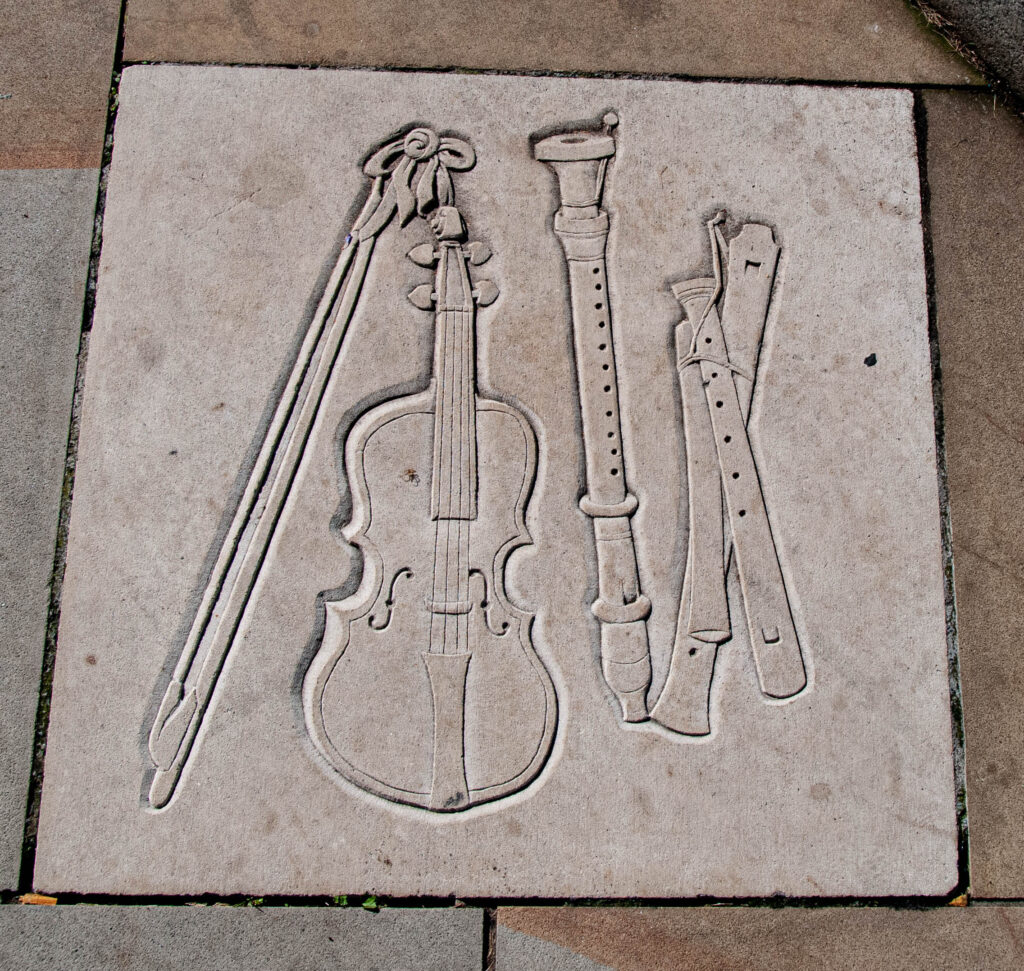
And a theorbo lute …
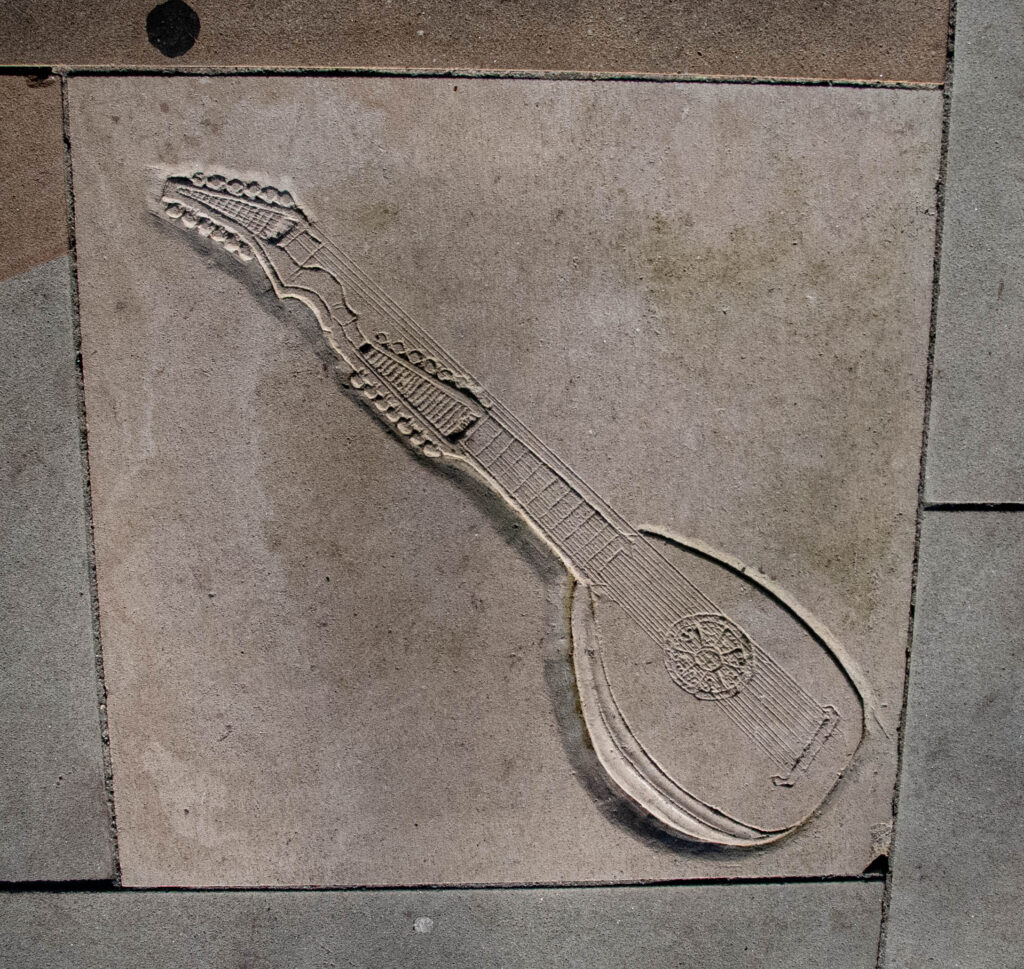
Alan Lamb, who supervised the carvings, working on the lute. Read more about him and his team here …
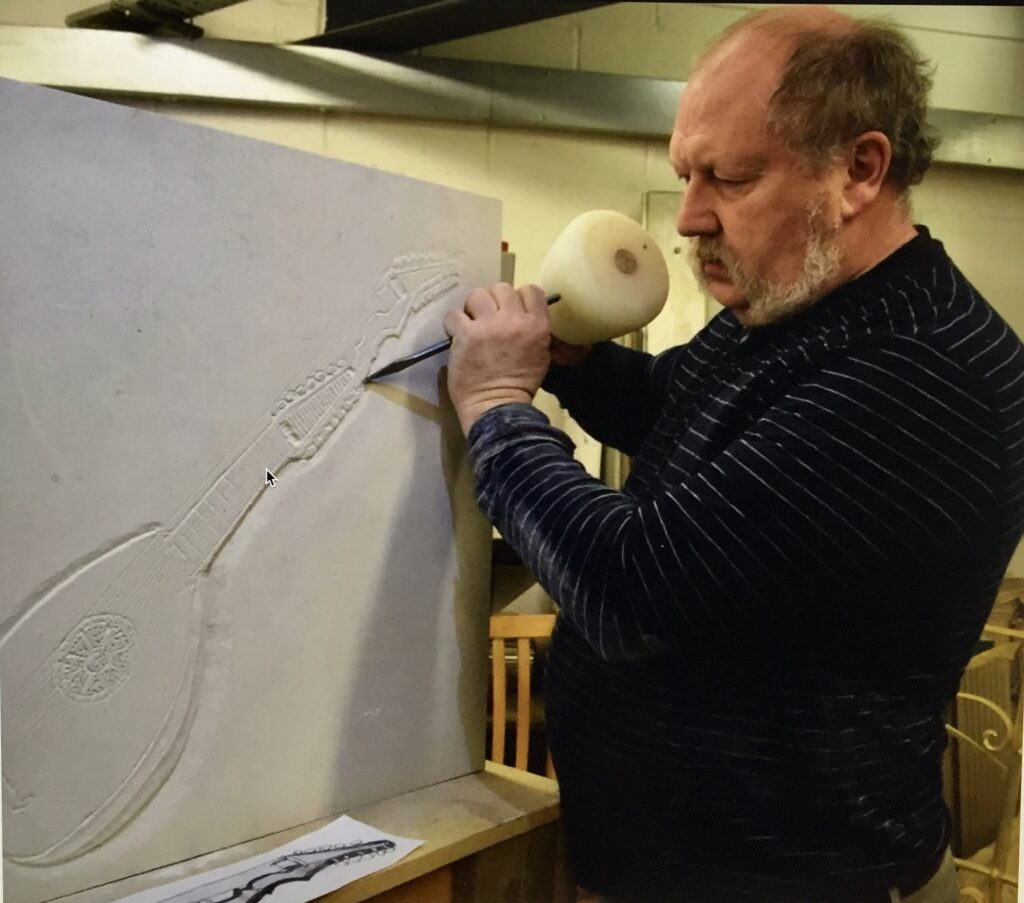
Pepys attended St Paul’s School as a boy and the hind is from the school’s coat of arms …
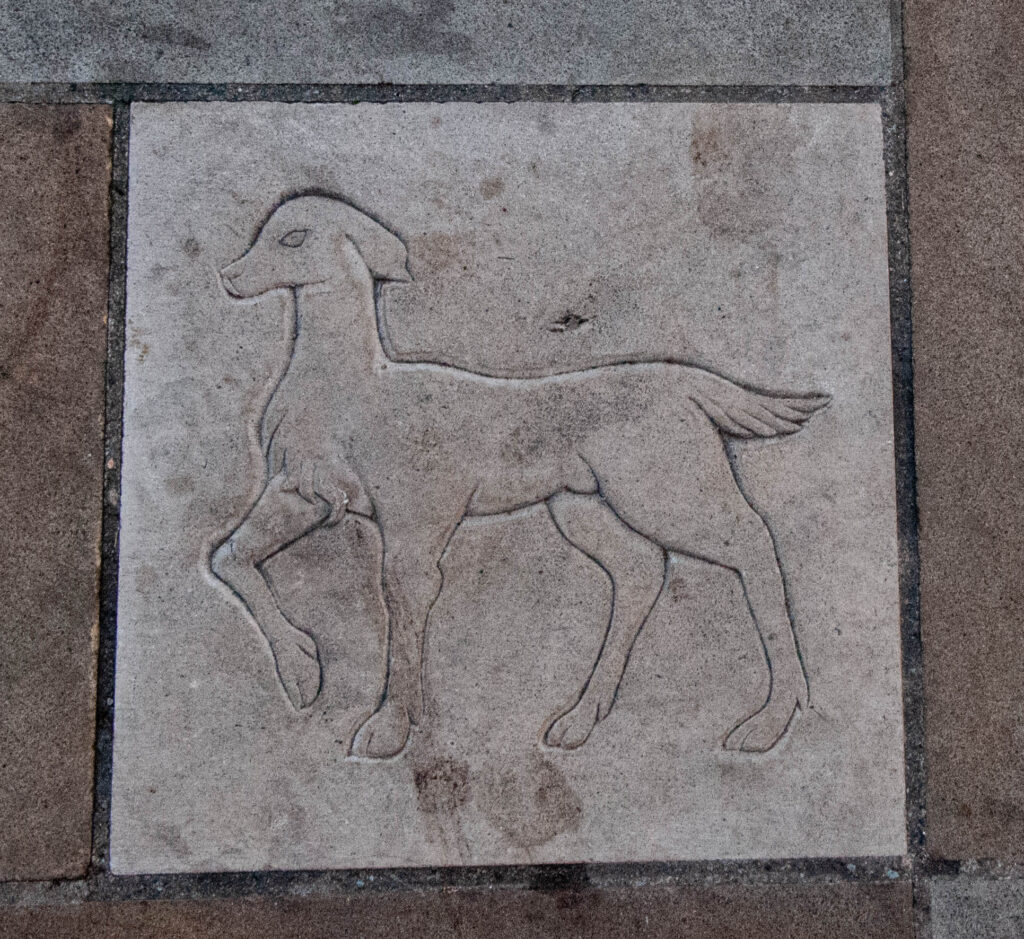
Samuel had been a student at Magdalene College, Cambridge and bequeathed the College his vast library of over 3,000 tomes (including the six volumes of his diary). The library, which bears his name, is represented here (the Wyvern is the College crest) …
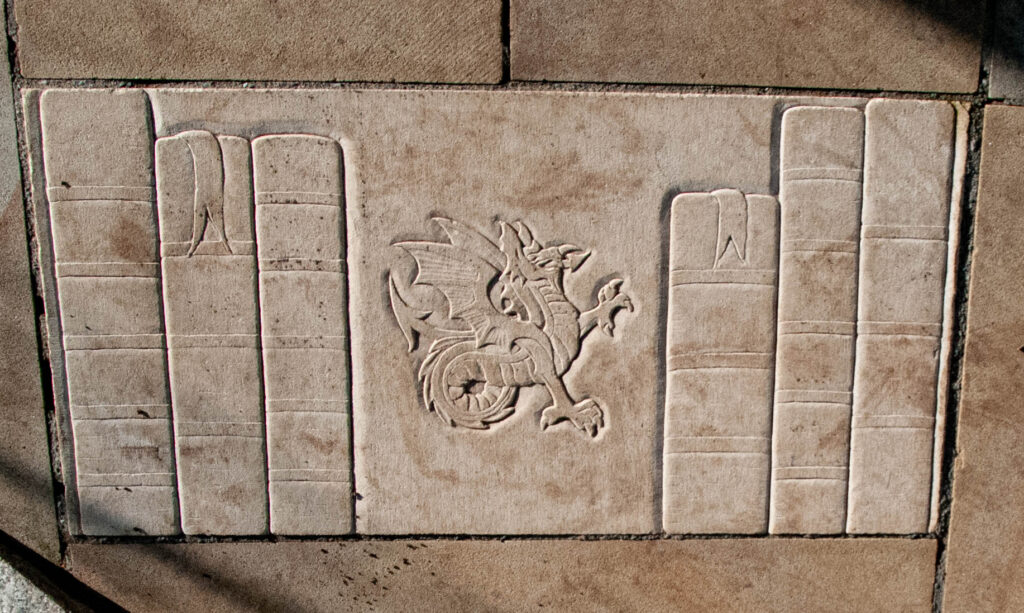
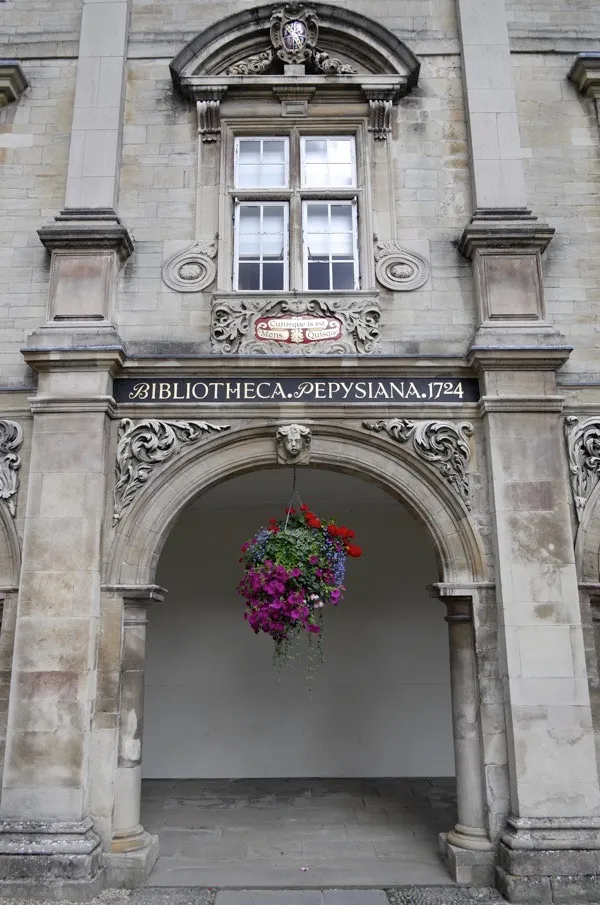
Pepys kept the diary from 1660 until 1669. The first page …
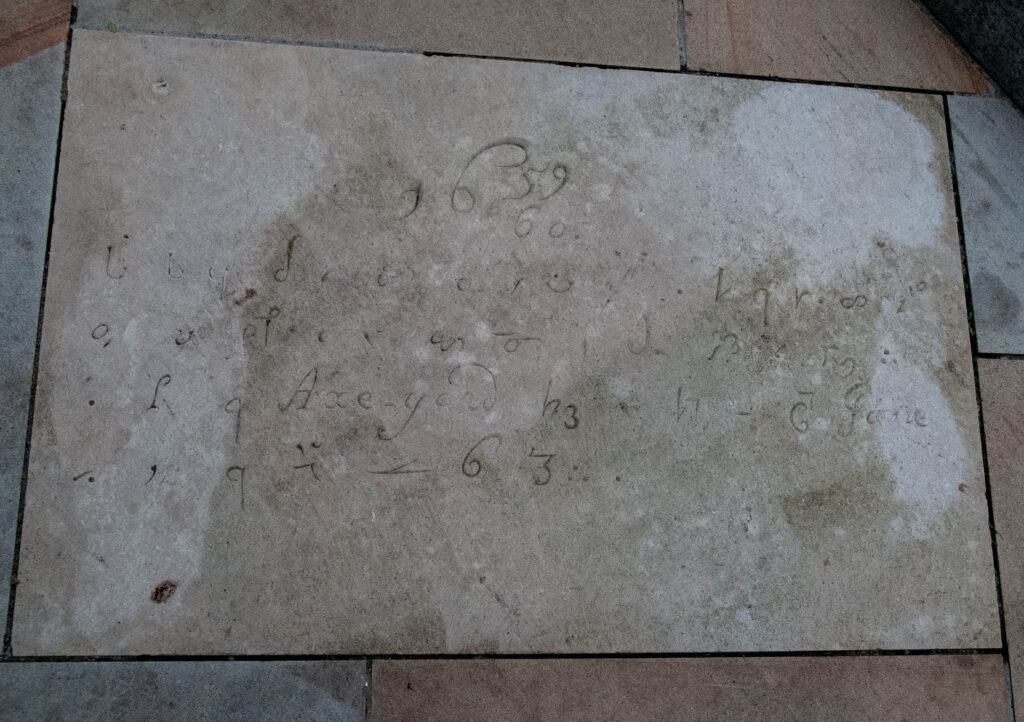
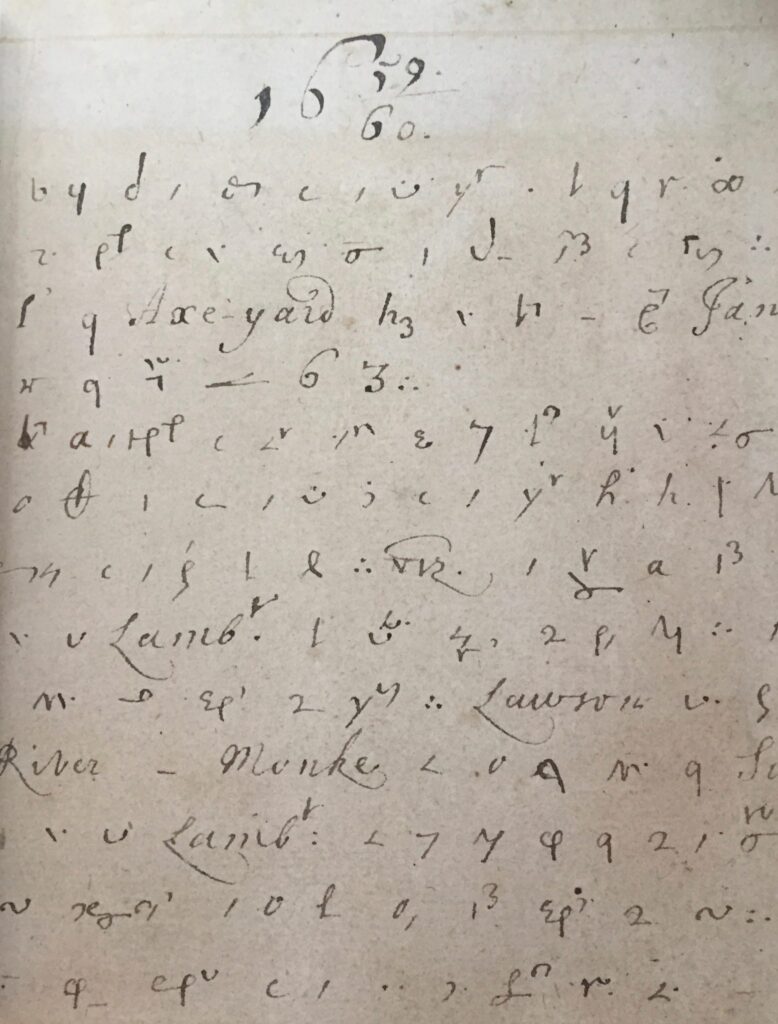
‘Blessed be God, at the end of last year I was in very good health, without any sense of my old pain but upon taking of cold. I live in Axe Yard, having my wife and servant Jane, and no more family than us three. My wife, after the absence of her terms for seven weeks, gave me hopes of her being with child, but on the last day of the year she hath them again.’
In 1655 when he was 22 he had married Elizabeth Michel shortly before her fifteenth birthday. Although he had many affairs (scrupulously recorded in his coded diary) he was left distraught by her death from typhoid fever at the age of 29 in November 1669. Her silhouette is in the garden paving …
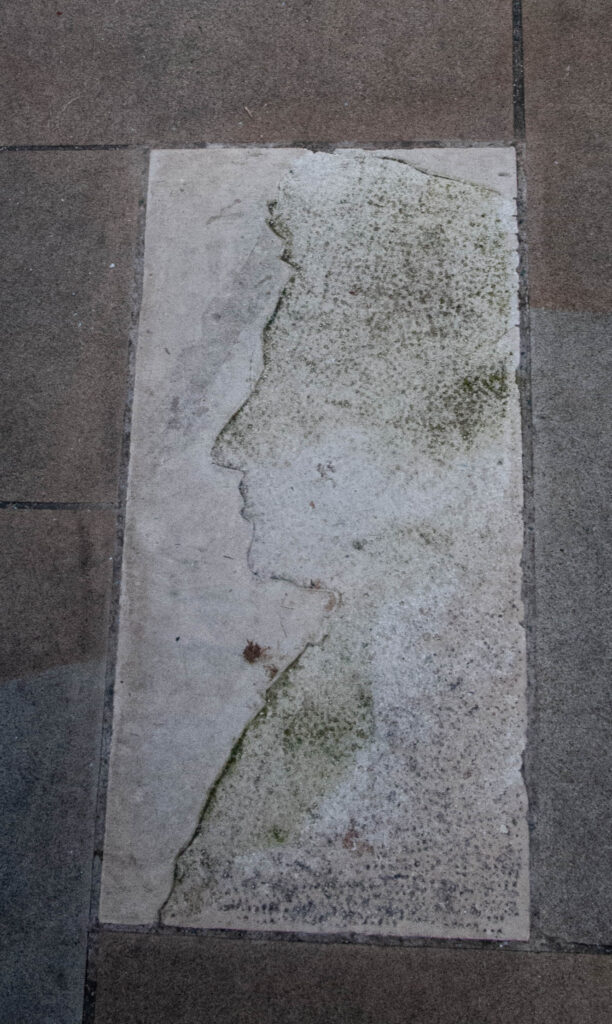
Pepys was on the ship the Royal Charles that brought Charles II back to England at the Restoration and was also a Trinity House Master on two occasions. The carving shows the ship and a section of the Trinity House coat of arms …
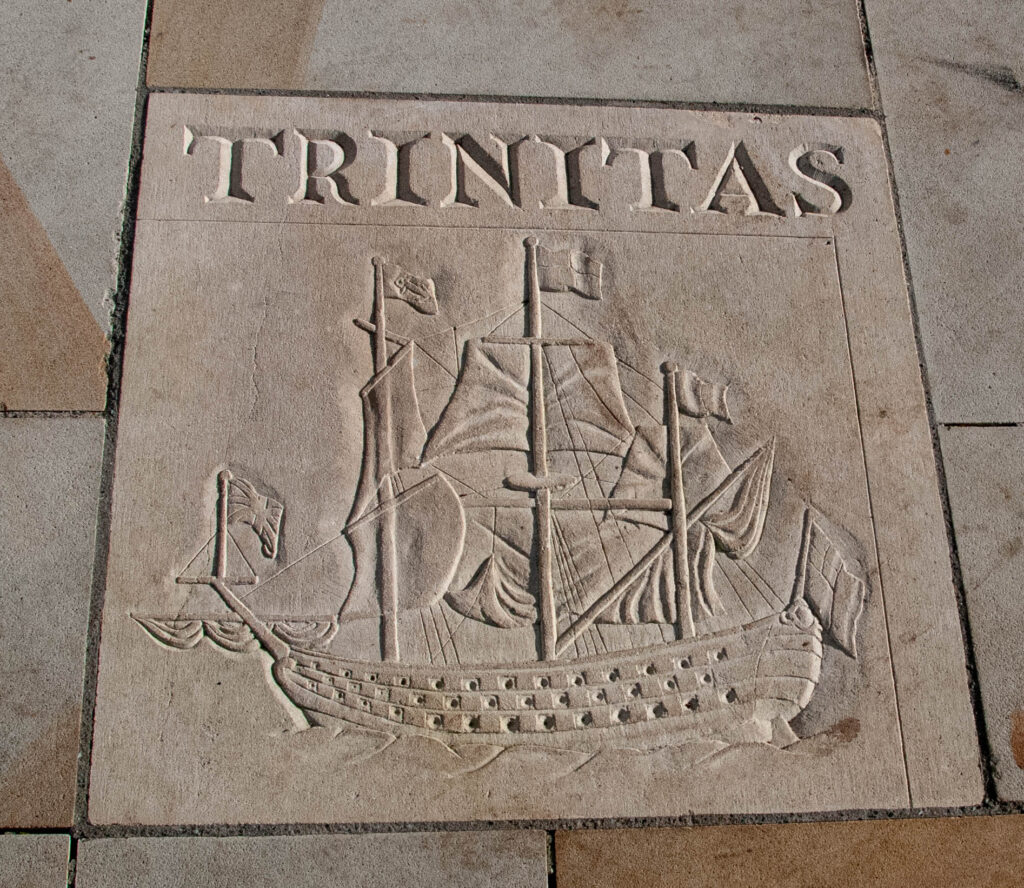
The Diary – September 1660 : ‘I did send for a cup of tee (a China drink) of which I never had drank before my lady having made us drink our morning draft there of several wines, but I drank nothing but some of her coffee, which was poorly made, with a little sugar in it’. Tea and coffee are represented in the garden by tea leaves and coffee beans …
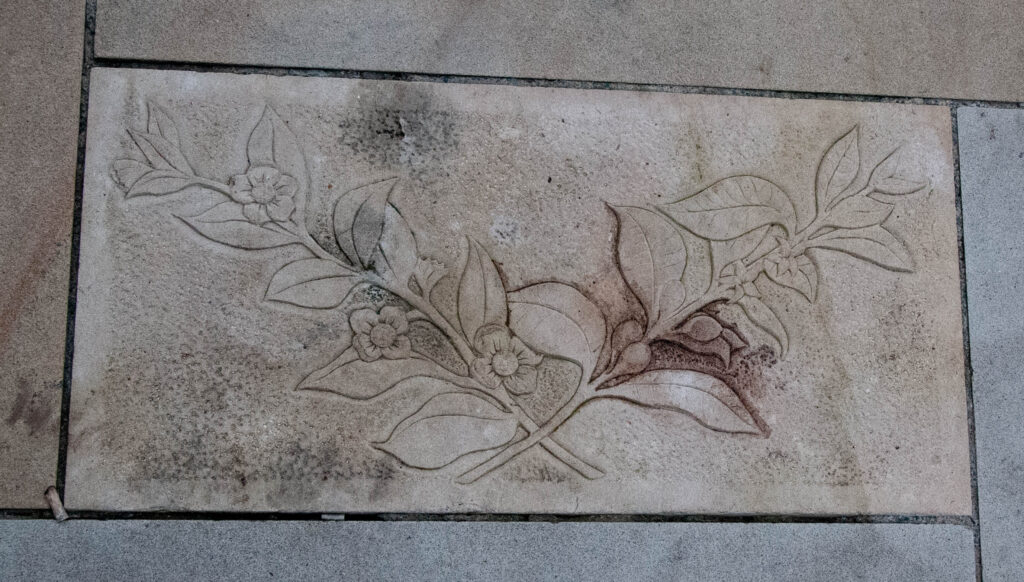
Pepys’s home meant that his local Church (‘our own church’ as he described it) became St Olave Hart Street, which is still there for us to explore today. The church is represented by an angel from the vestry ceiling and skulls from the churchyard entrance …
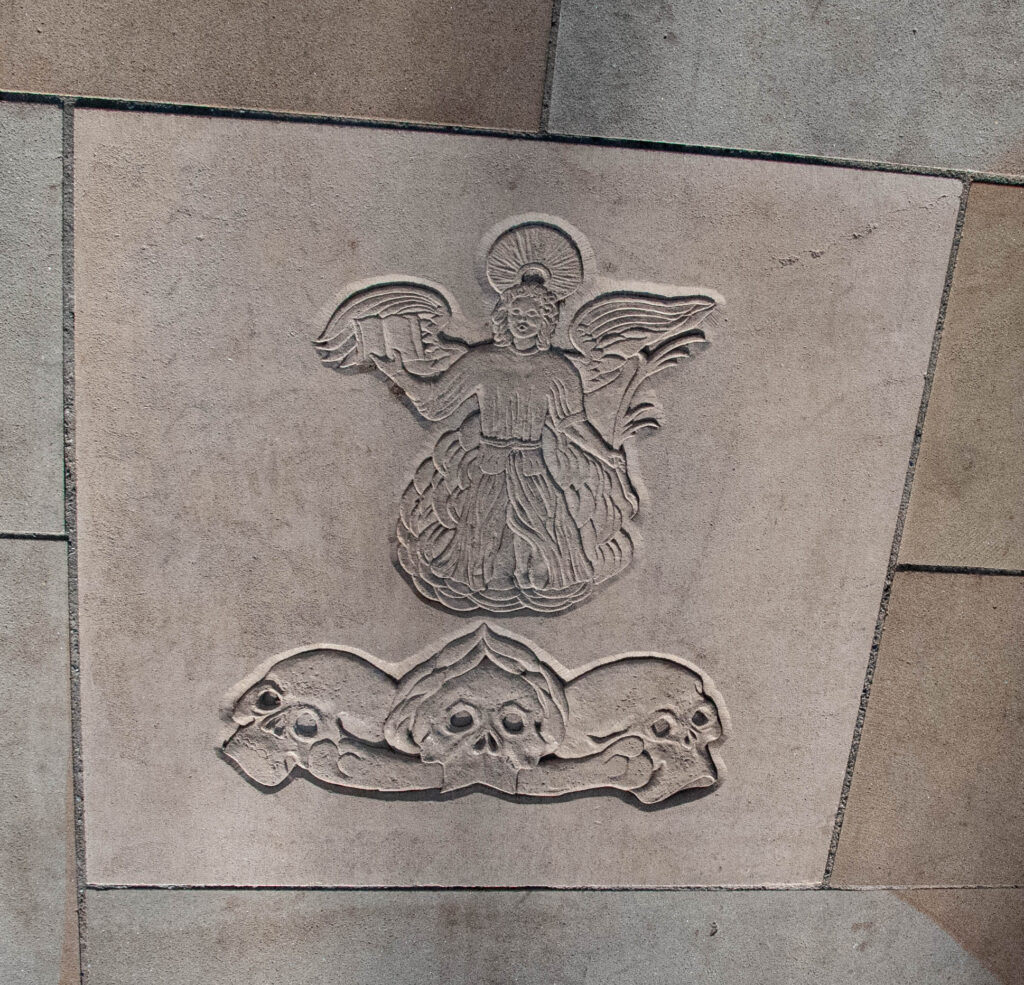
In 1673 he was involved with the establishment of the Royal Mathematical School at Christ’s Hospital which was to train 40 boys annually in navigation for the benefit of the Royal Navy and the English Merchant Navy, The commemorative paver is entitled ‘The science and practice of navigation’ …
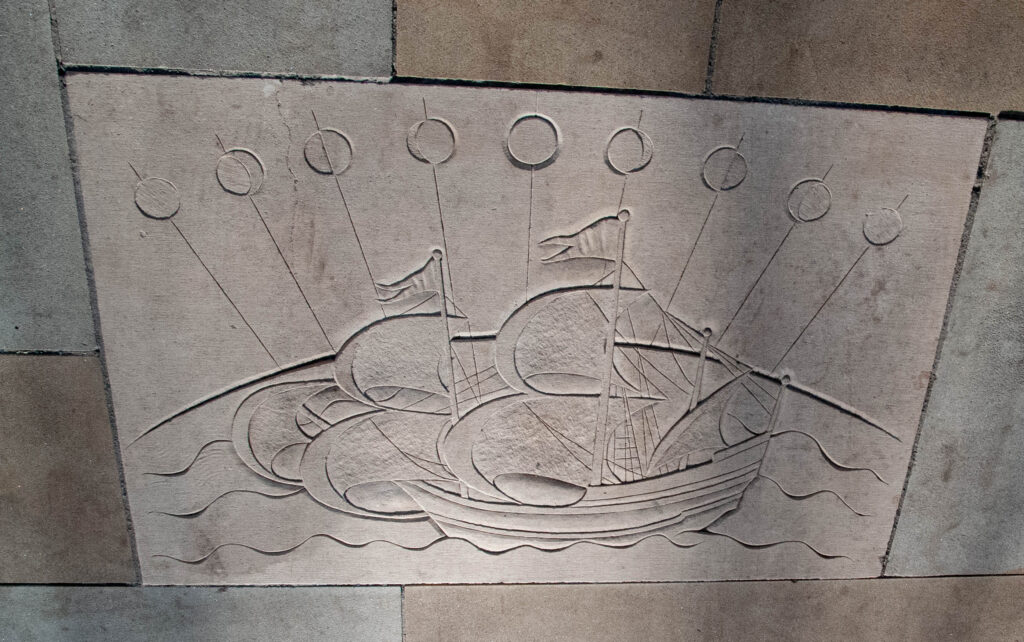
He wrote of a visit to Bartholomew Fair : ‘… but above all there was at last represented the sea, with Neptune, Venus mermaids and Ayrid on a dolphin’. You’ll find a mermaid in the garden …
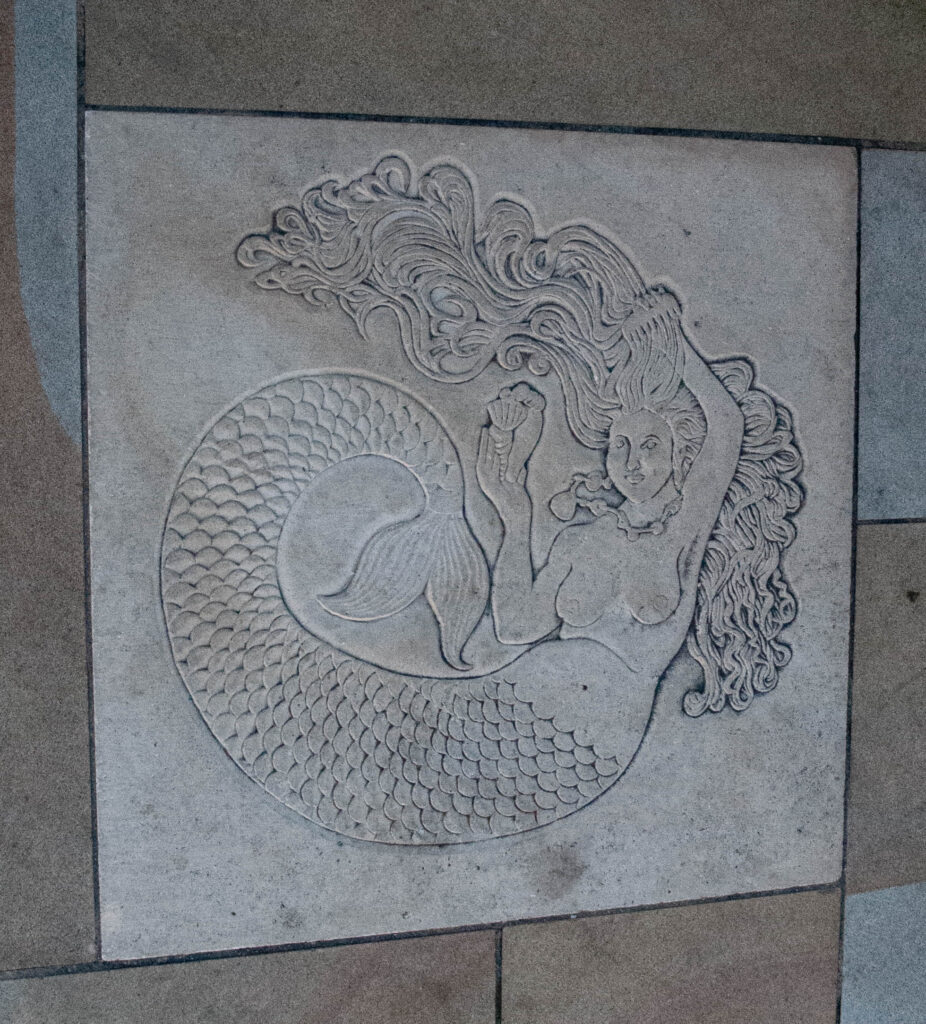
If you wander around the garden here are the other carvings that you will encounter.
Samuel’s monogram …
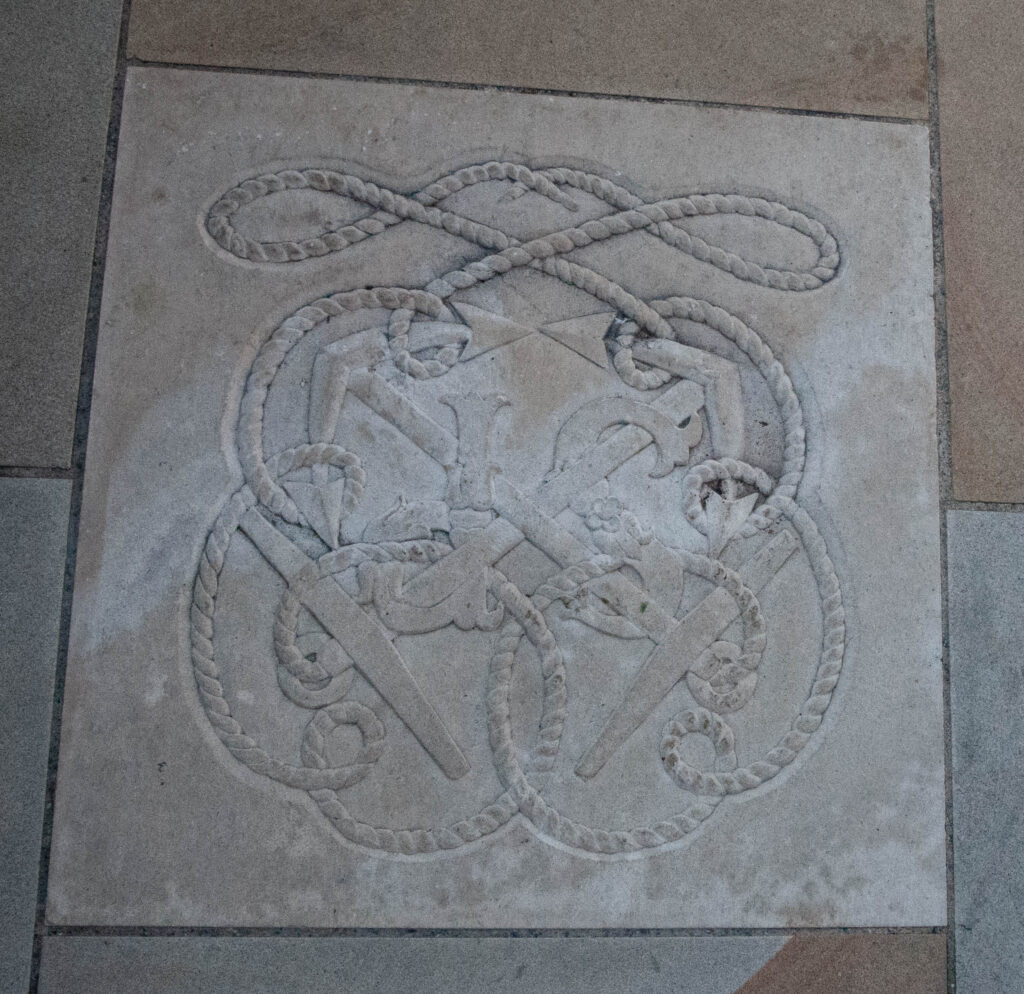
A watermark from a letter to Pepys from King James II …
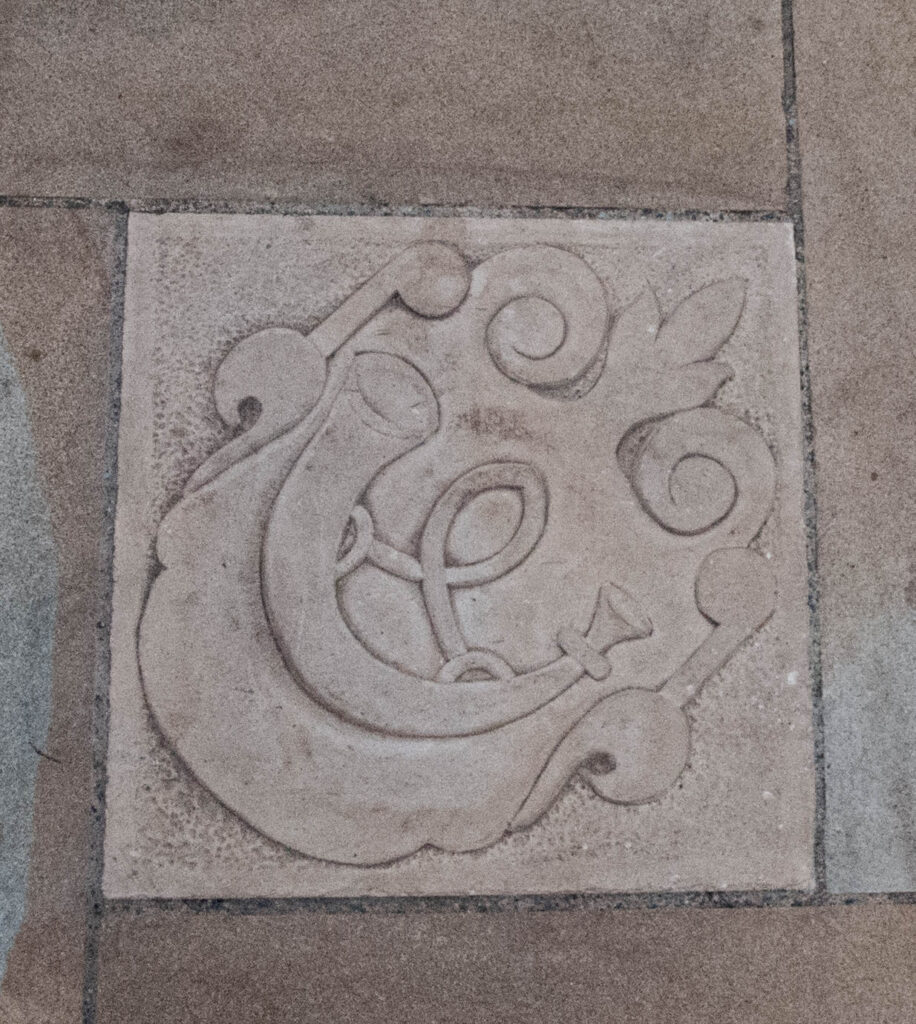
Pepys was President of the Royal Society when Sir Isaac Newton published Philosophiae Principea …
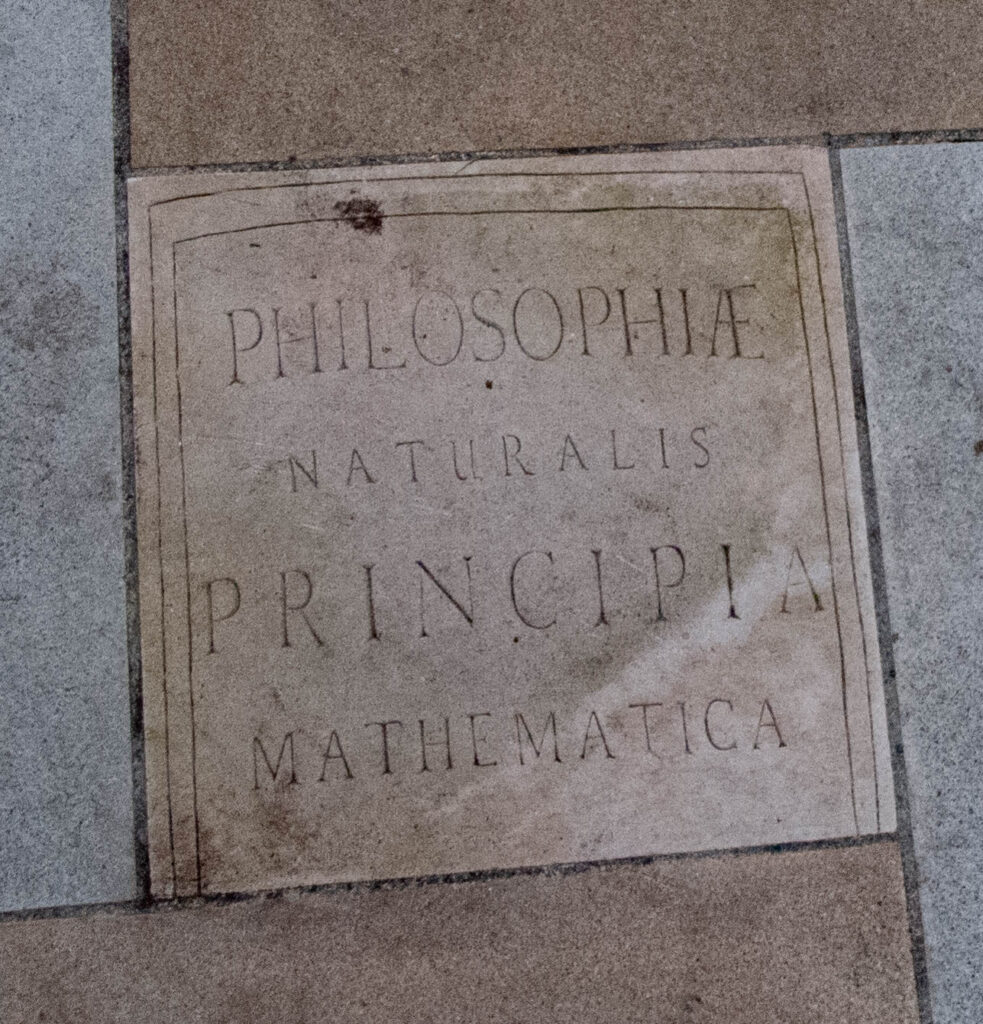
A map of Pepys’s London …
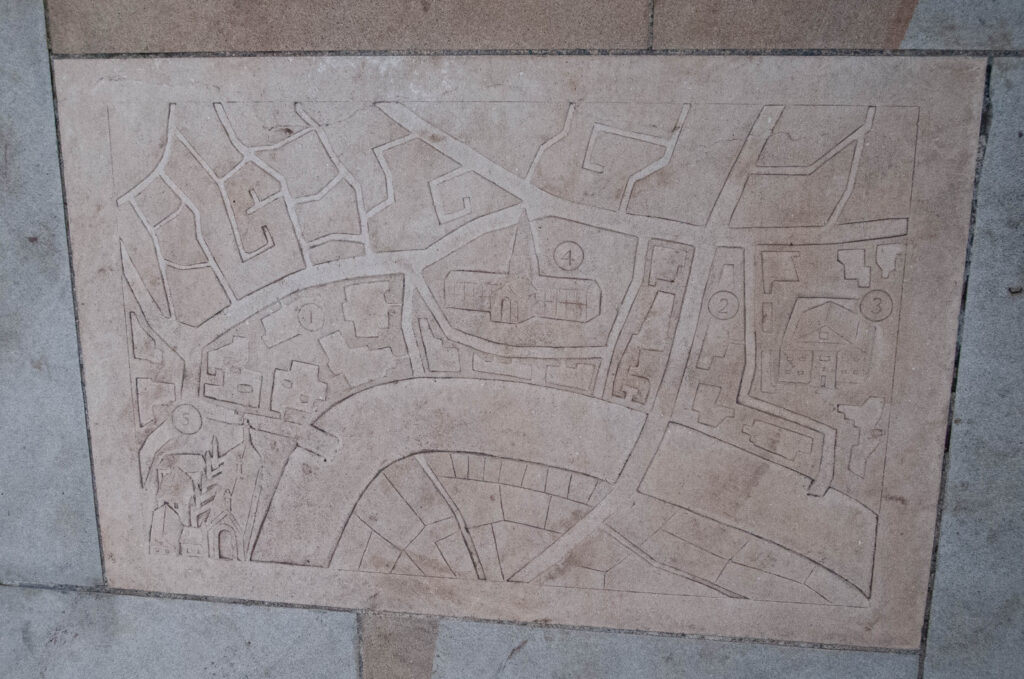
The Naval Office in Seething Lane where Pepys worked …
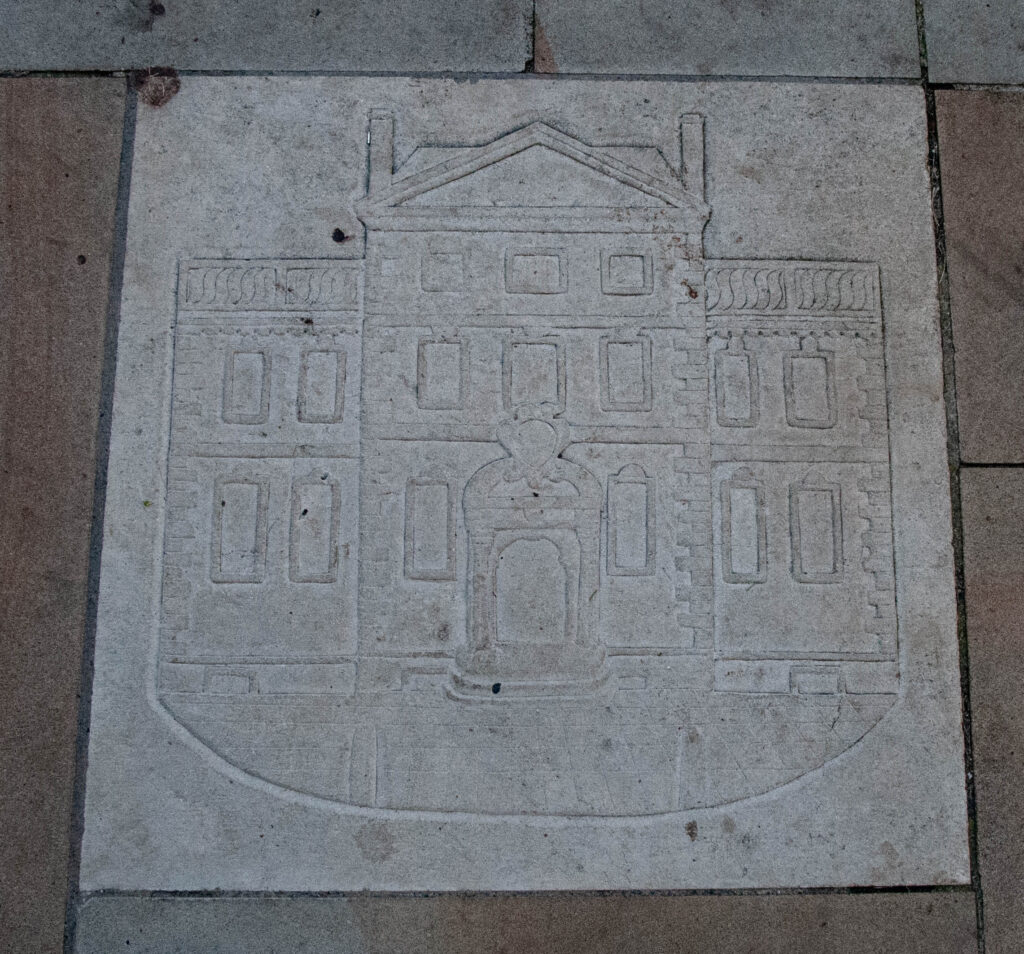
The Pepys coat of arms …
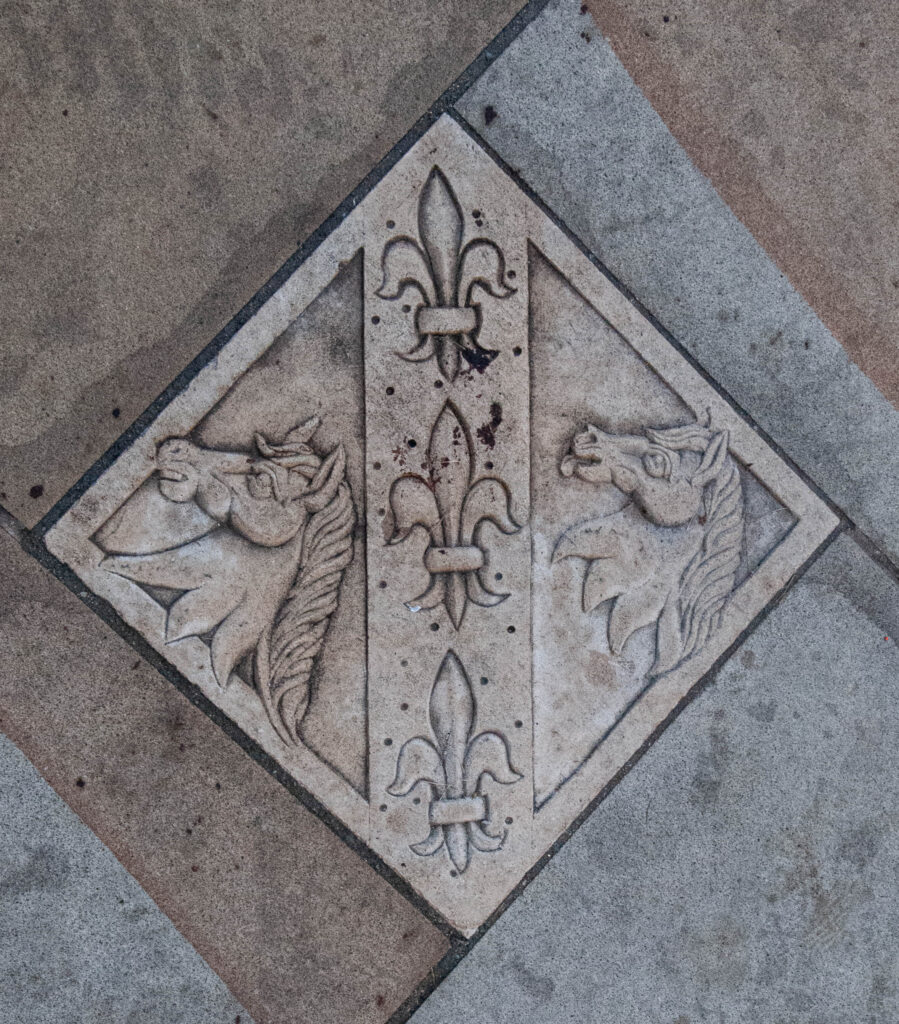
A teasel from the arms of the Clothiers Company where Pepys was once the Master …
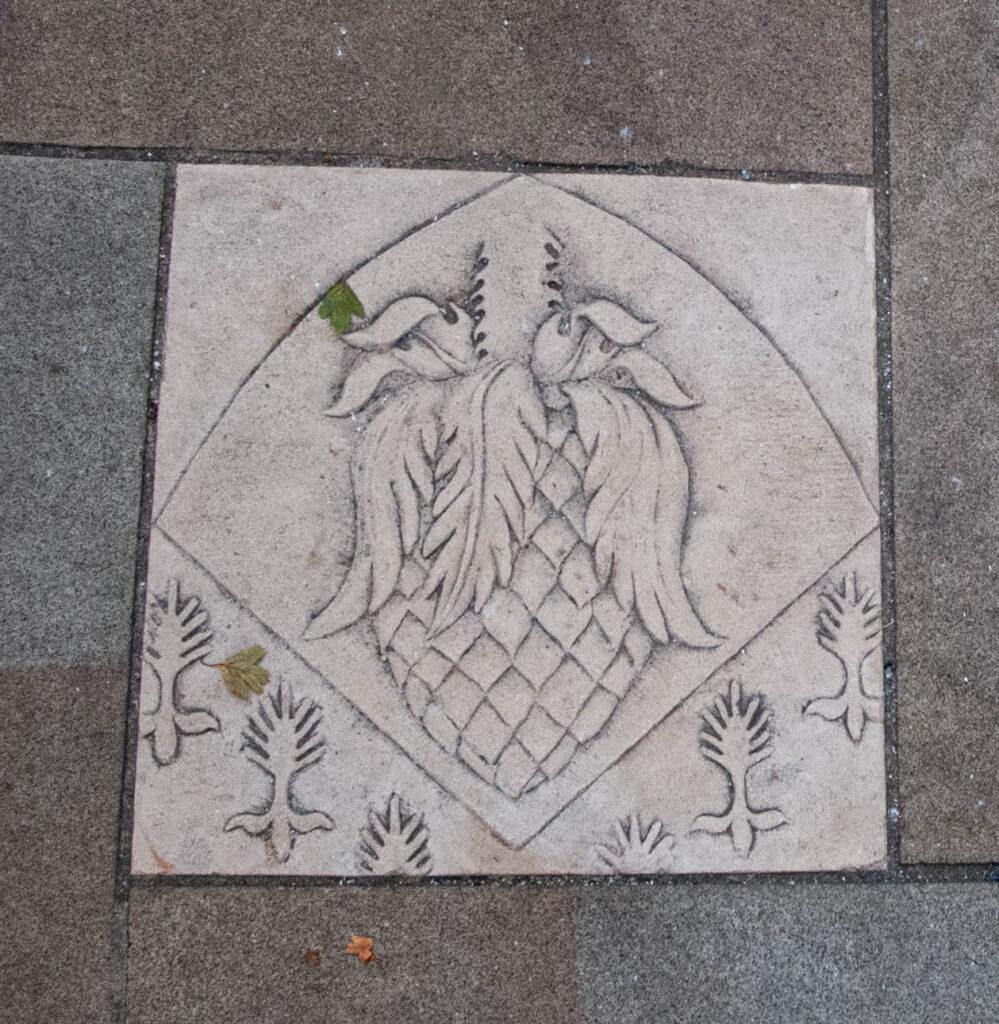
Pepys’s profile …
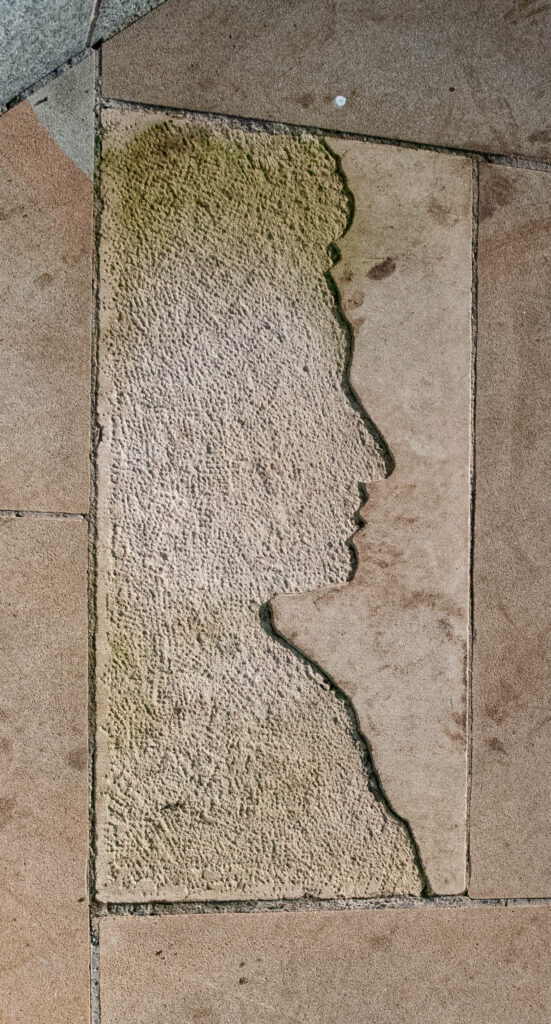
Were he to arise from his resting place next to Elizabeth in St Olave’s what would he make of all this? I’m sure he would be delighted that his ‘own church’ was still there along with the lovely bust of Elizabeth he commissioned after her death. She still looks pretty and animated as if in conversation …
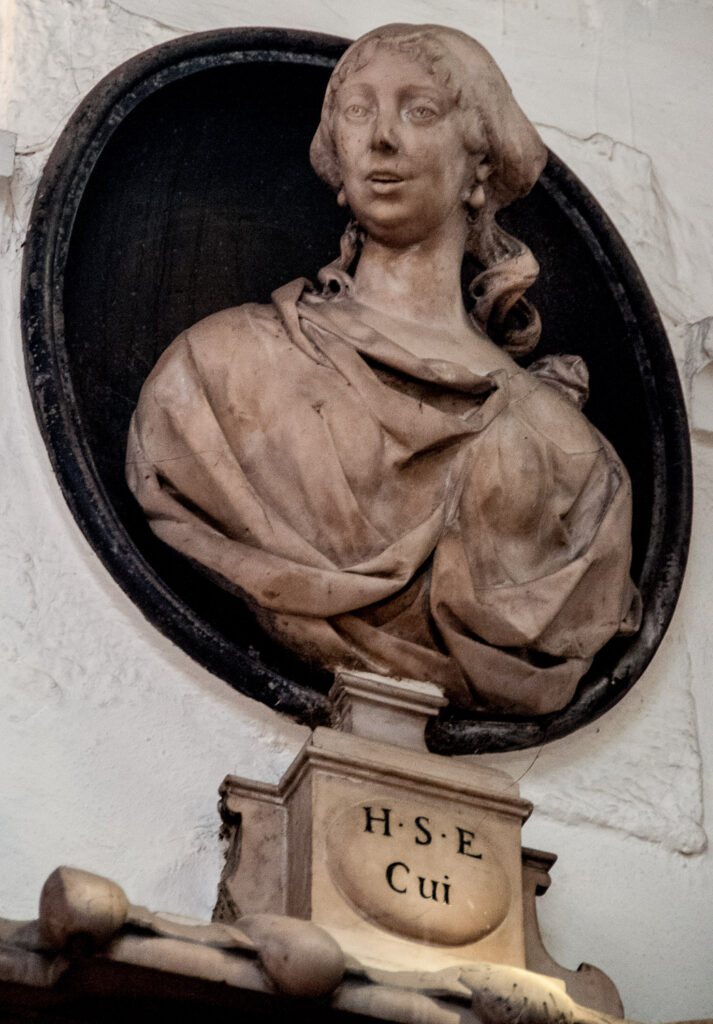
And surely he would be proud of his own bust in the garden, especially as it also commemorates Beauty Retire. Being a man of insatiable curiosity, he would no doubt want to know more about the mechanics of how the garden was irrigated using rainwater harvested from the roof of the hotel next door!
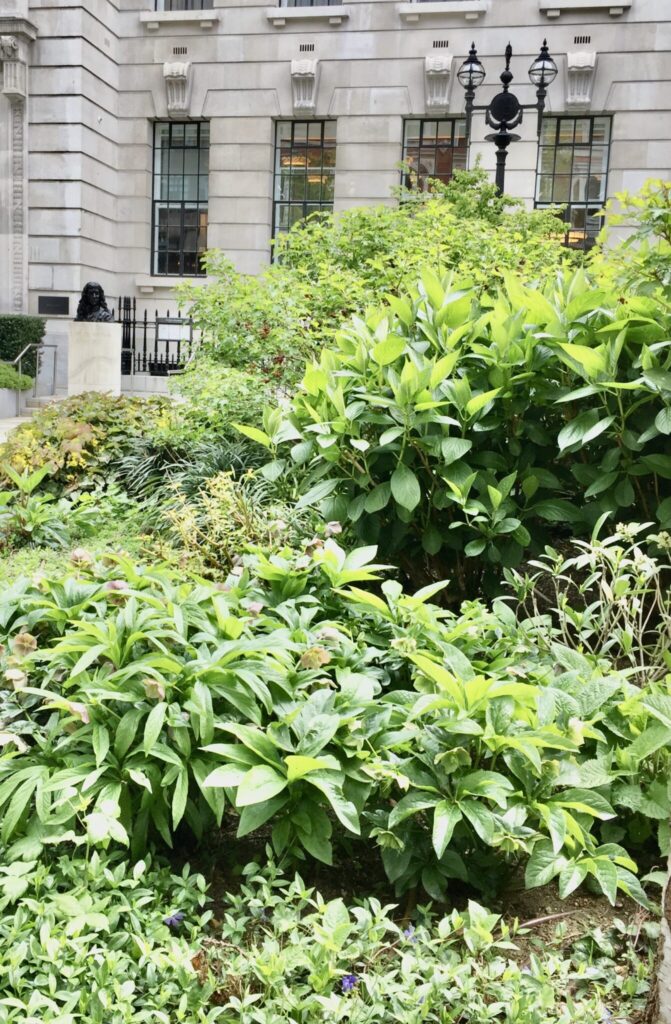
When he retired as secretary of the affairs of the Admiralty of England in 1689 ’not only had he doubled the navy’s fighting strength, but he had given it what it had never possessed before and what it never again lost—a great administrative tradition of order, discipline and service’. The orator of Oxford University declared ‘To your praises, the whole ocean bears witness; truly, sir, you have encompassed Britain with wooden walls.’ Samuel might be a little disappointed that, now in the 21st century, the mention of his name brings to many peoples’ mind only his famous diary.
If you need help finding the various carvings here’s a useful little map …
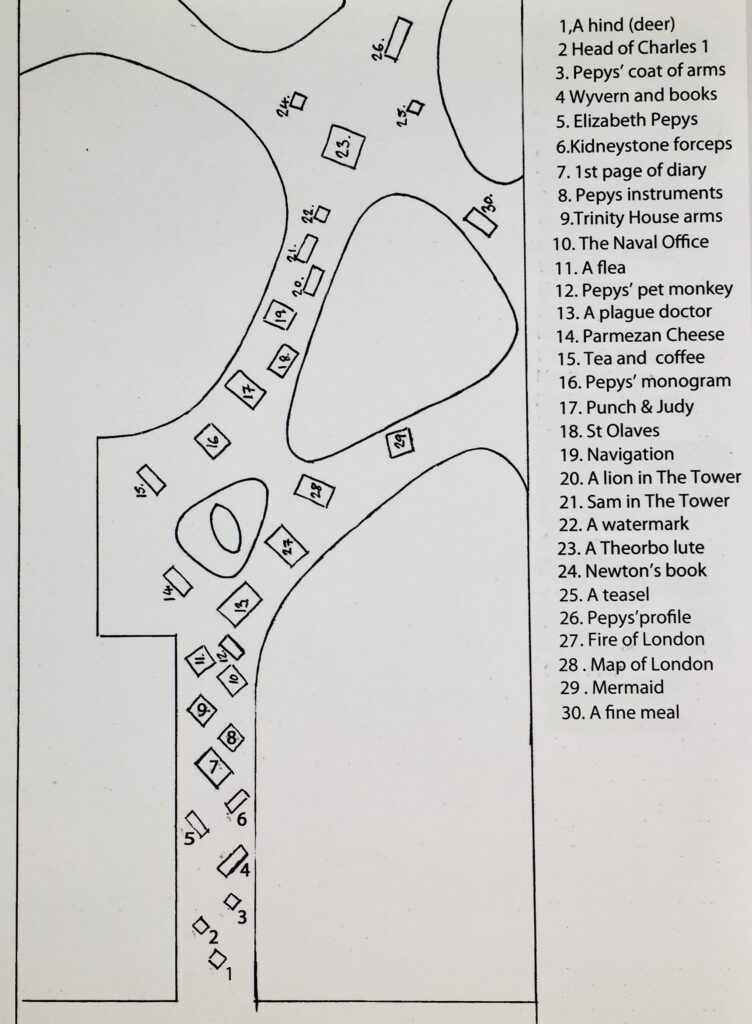
Do visit the garden if you get the chance. It’s also an opportunity to visit the beautiful St Olave’s Hart Street, Sam’s ‘own church’, which is located nearby. I’ve written about it before and you can find my blogs here and here.
If you would like to follow me on Instagram here is the link …
